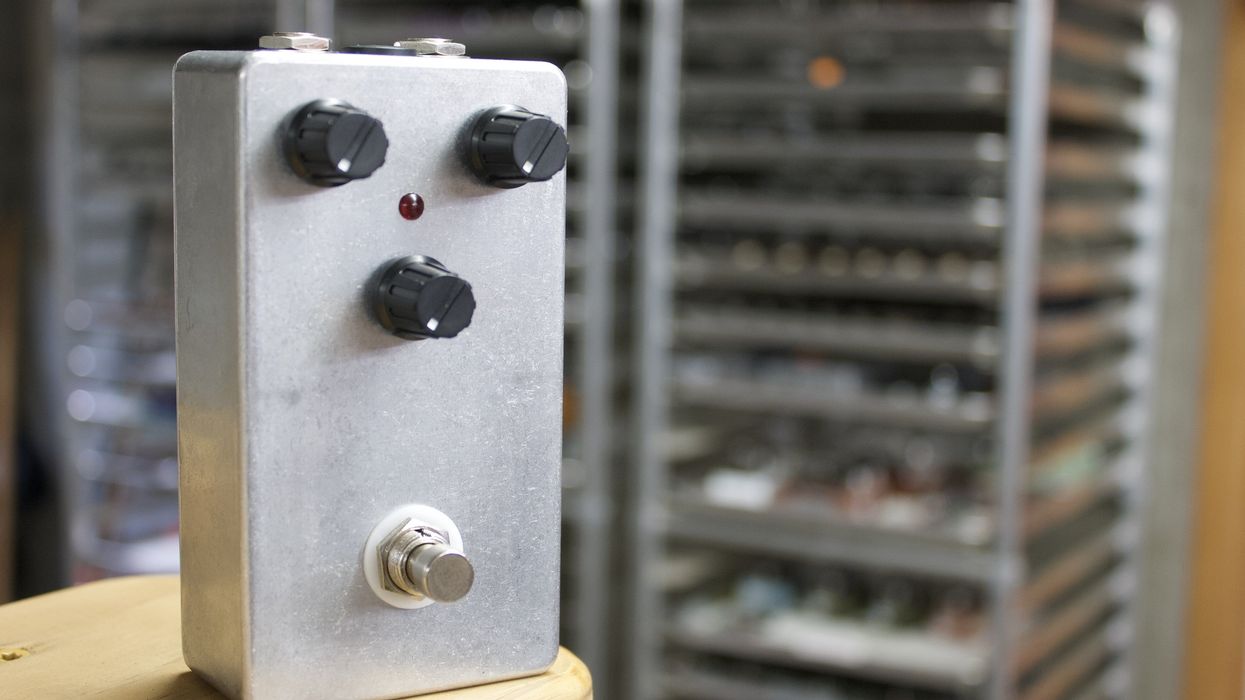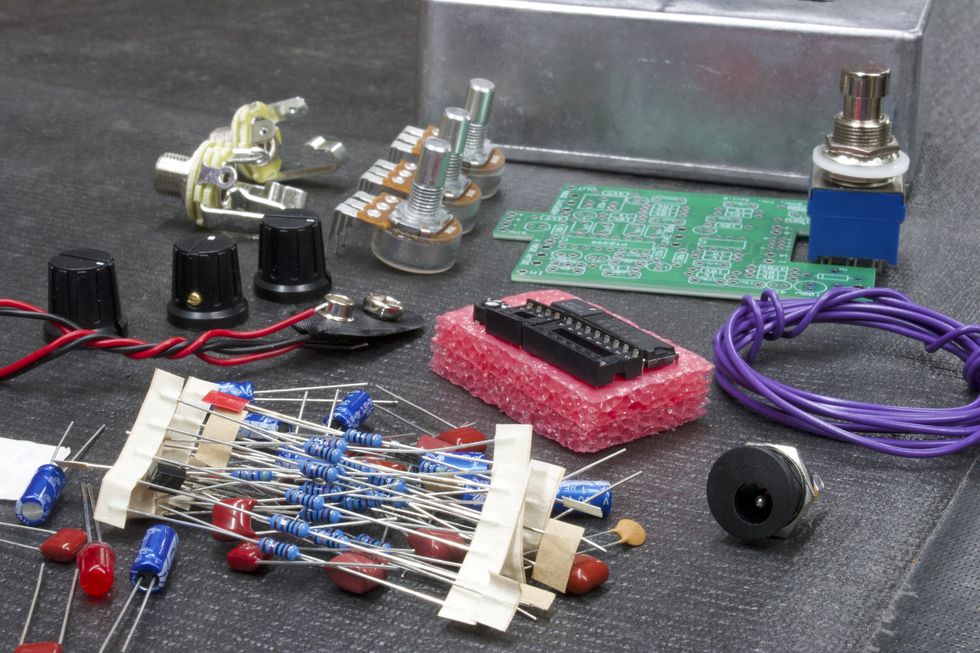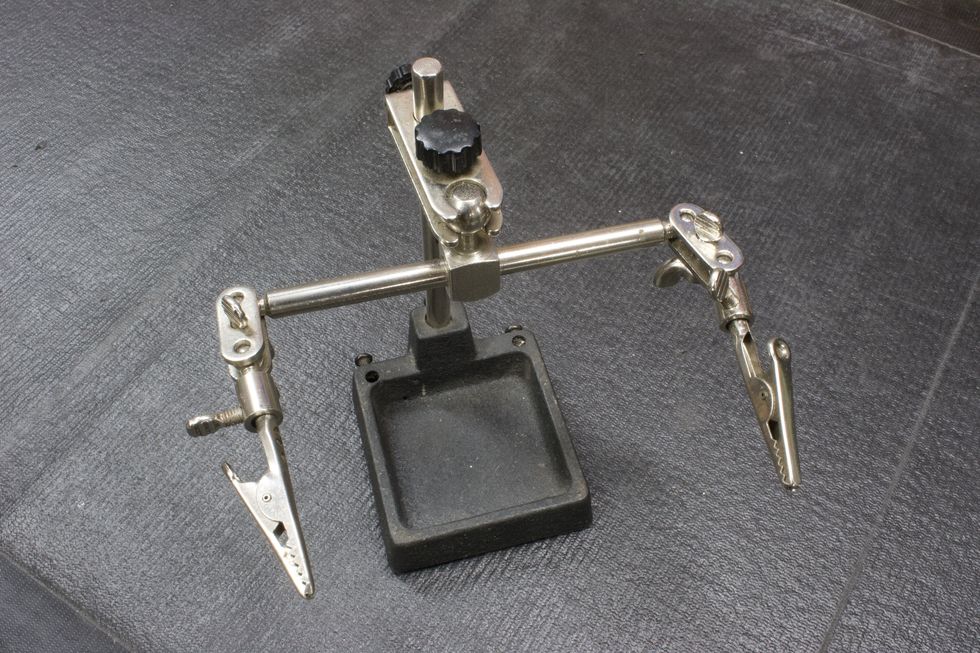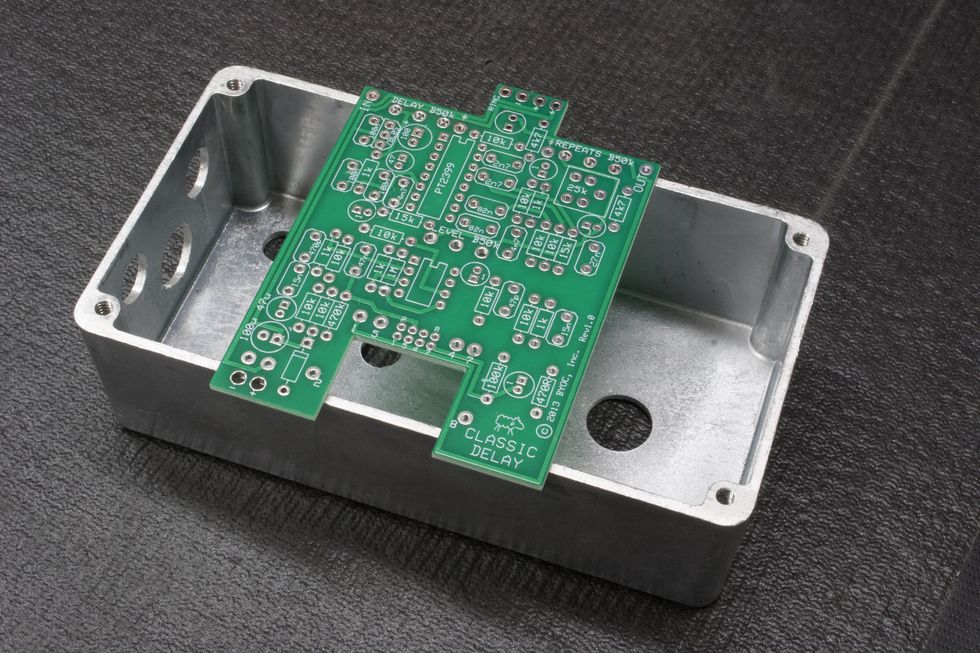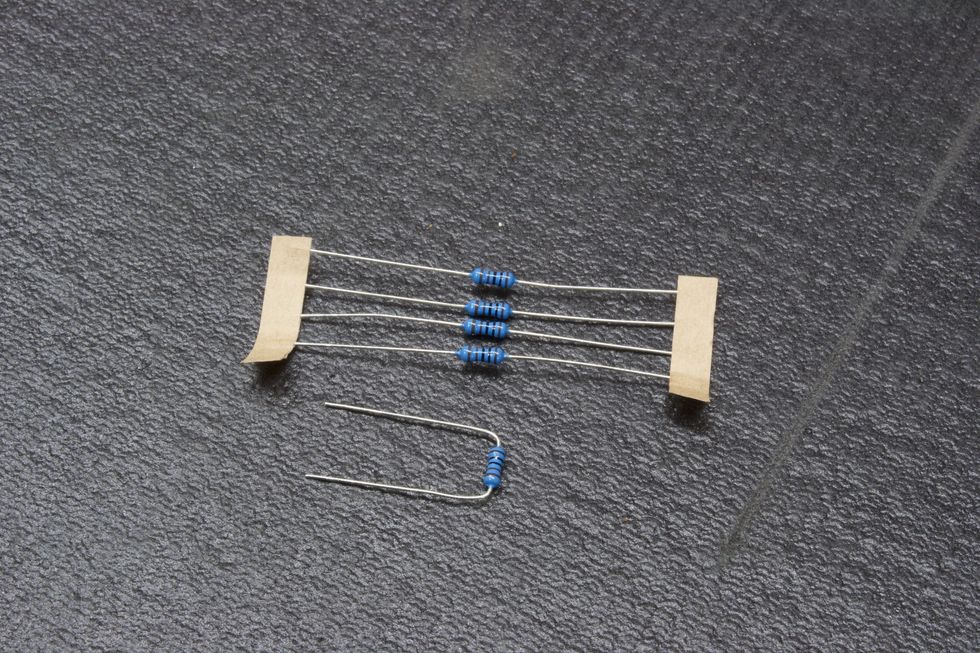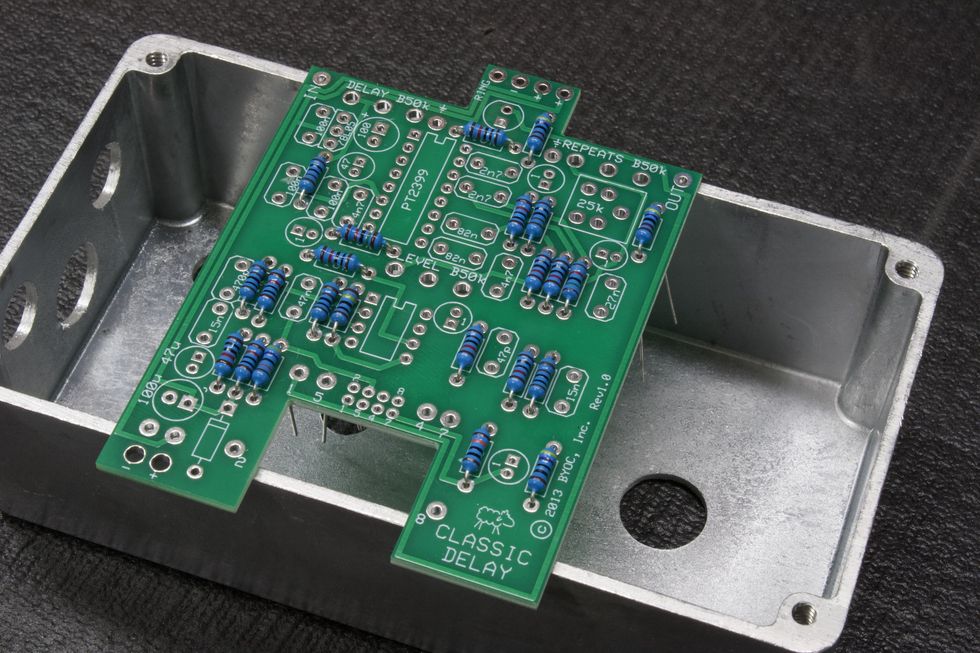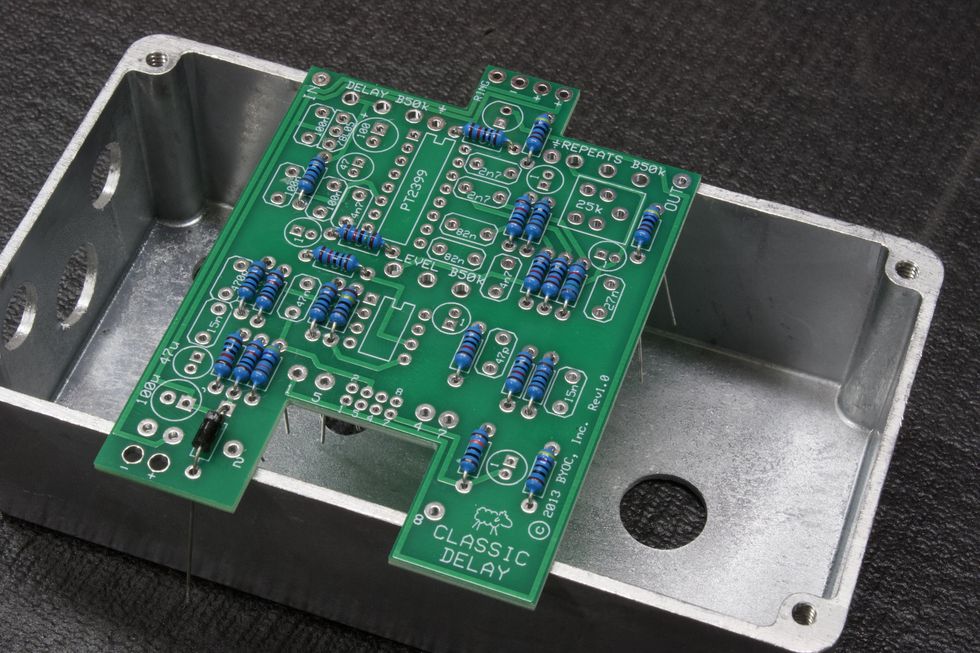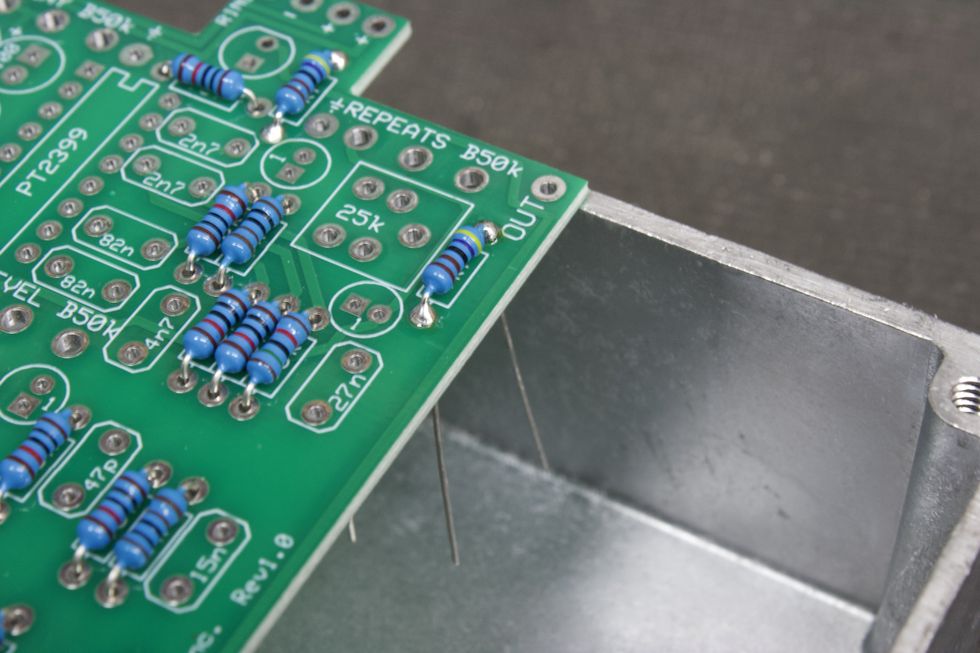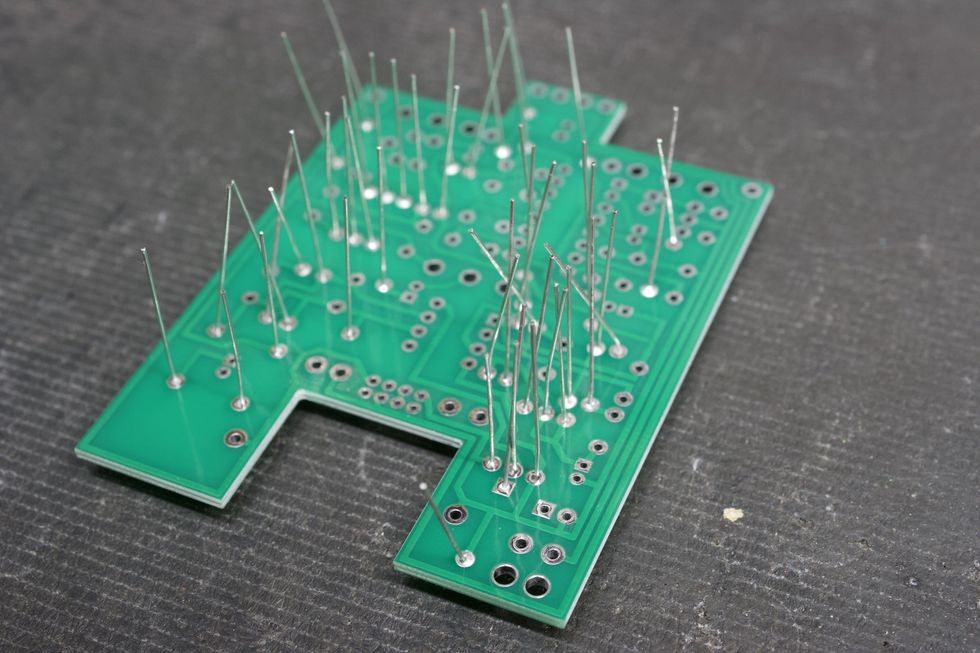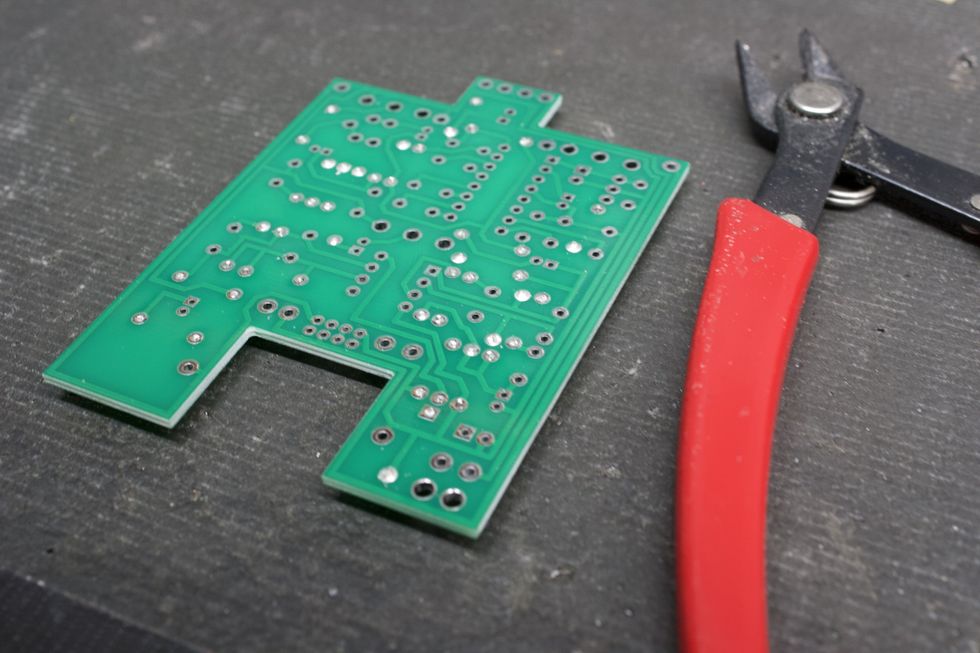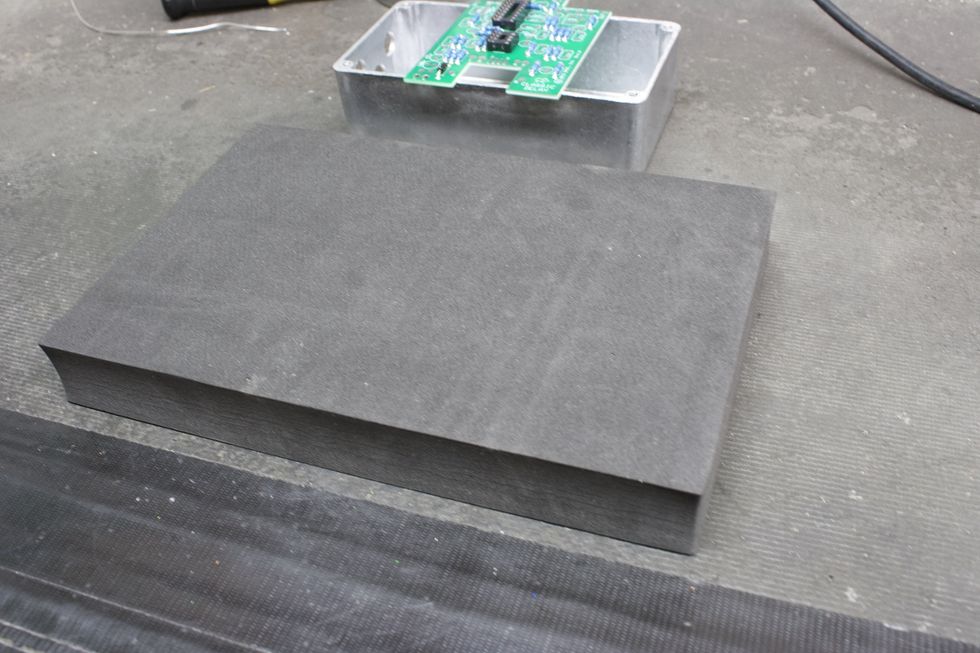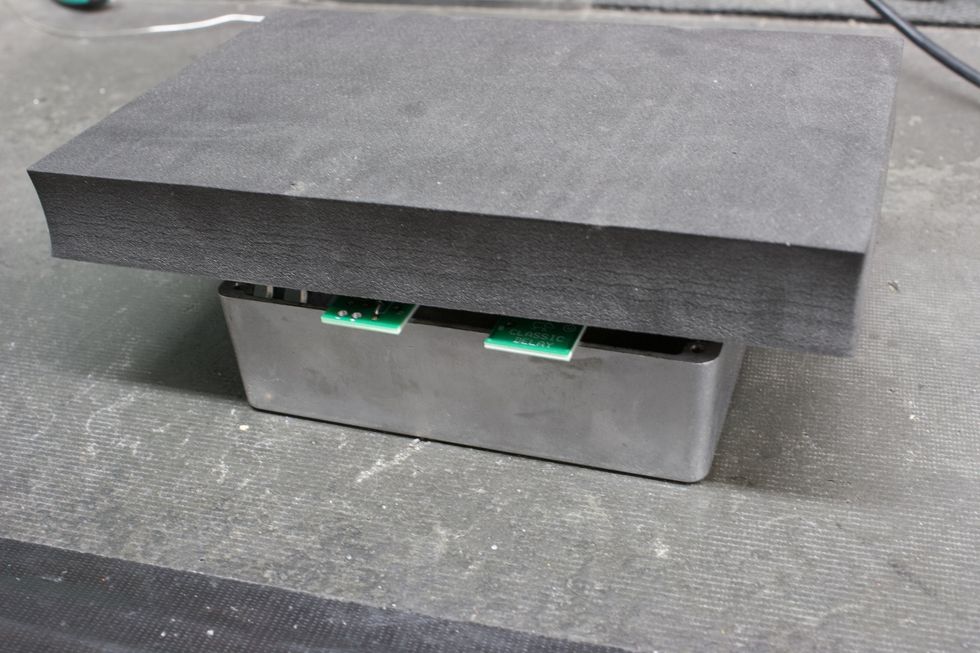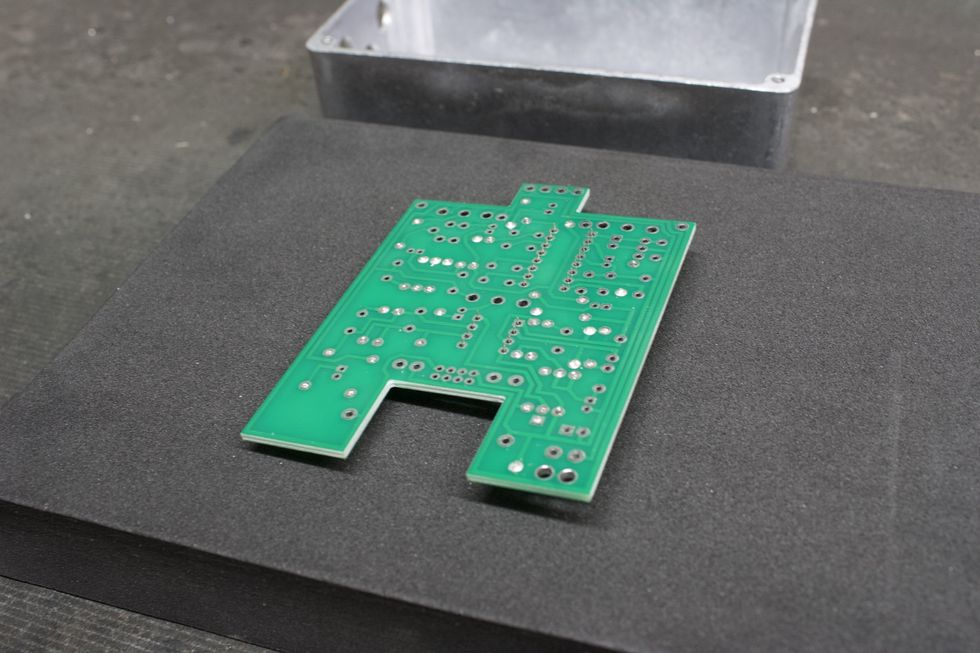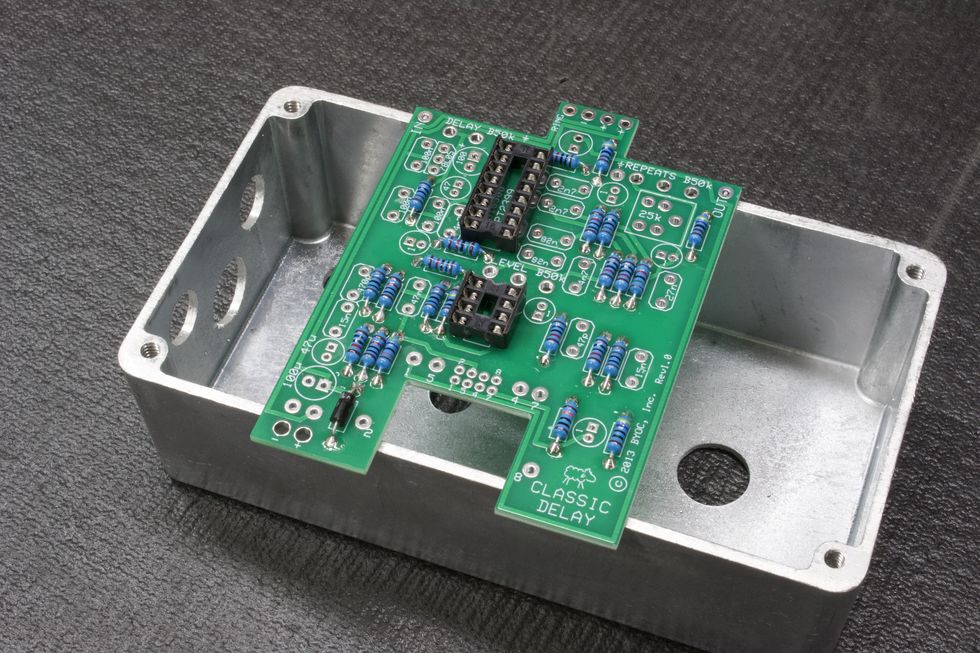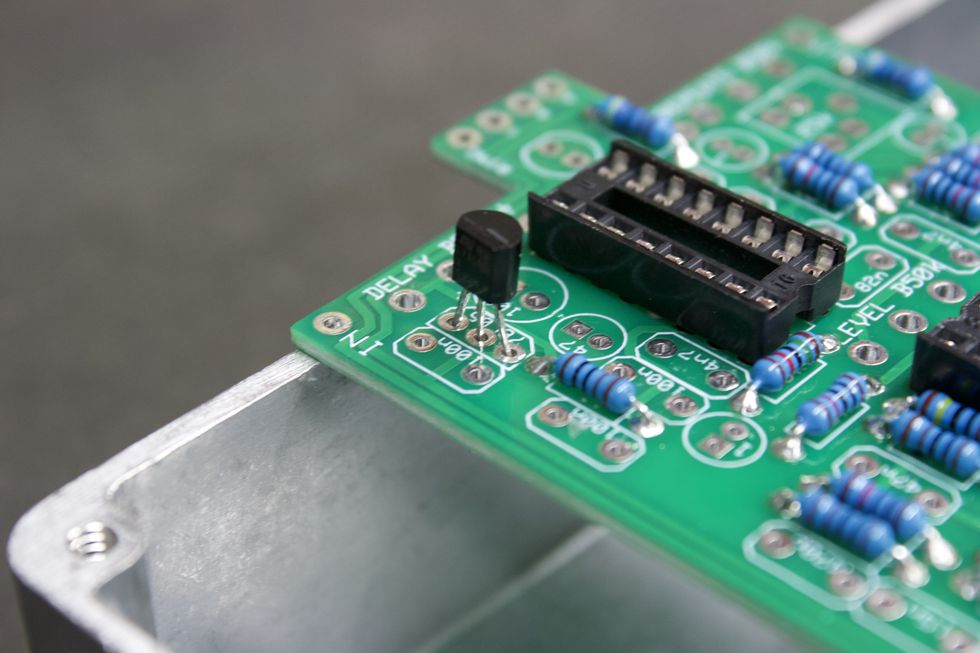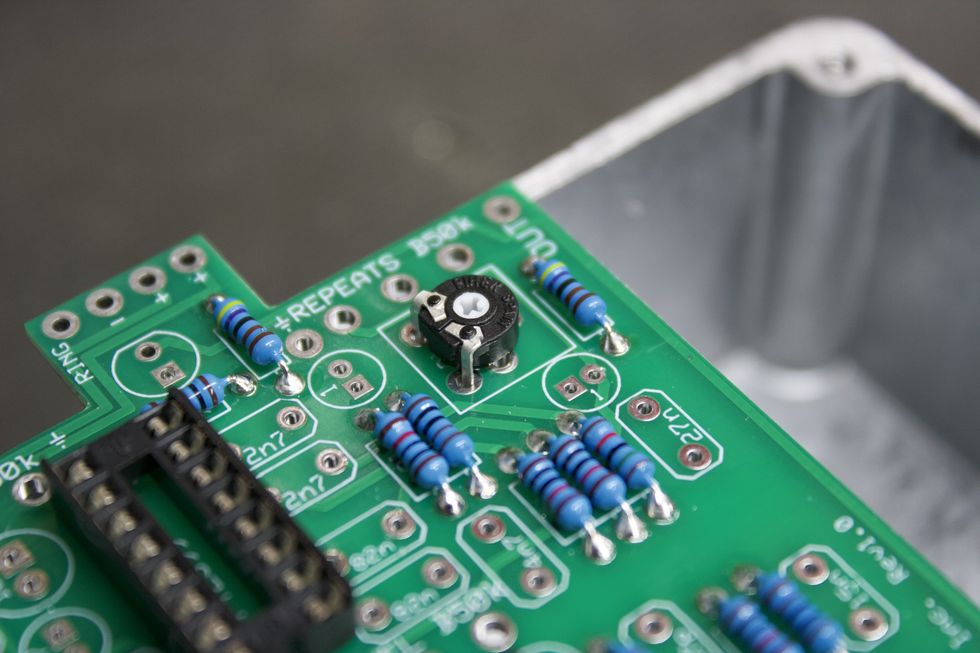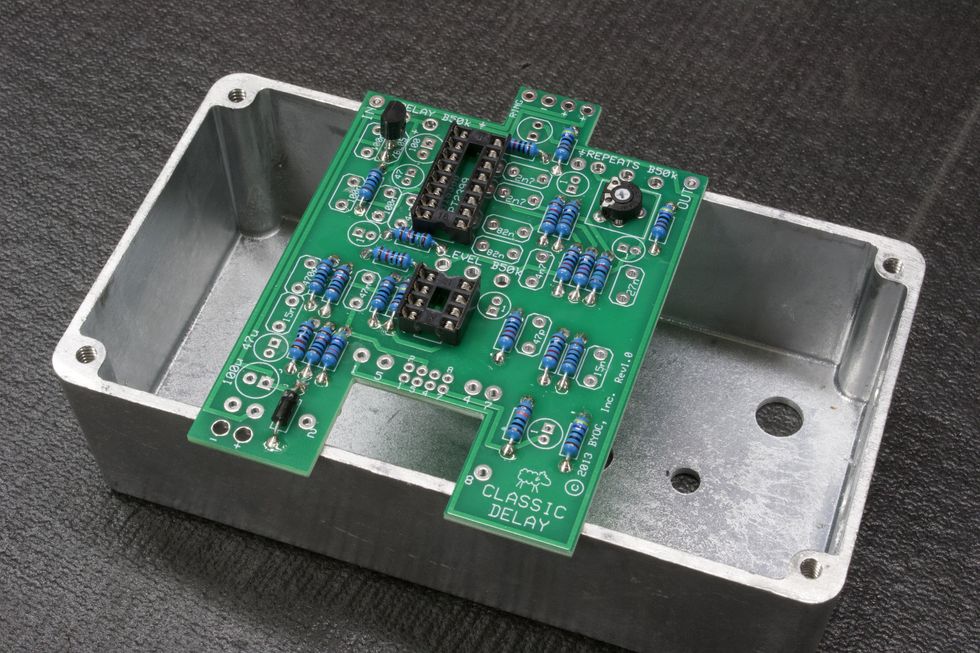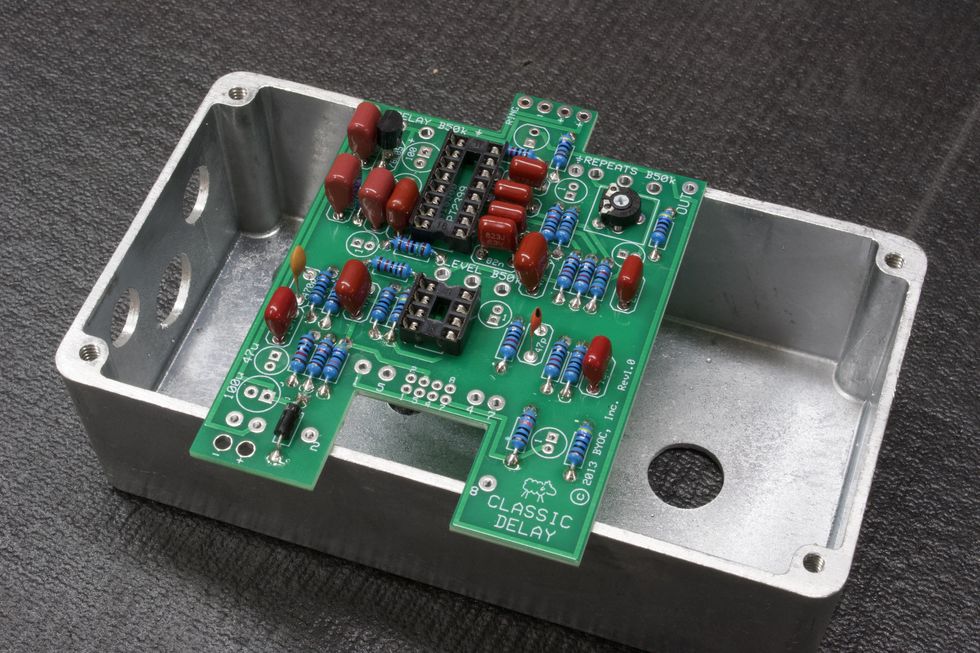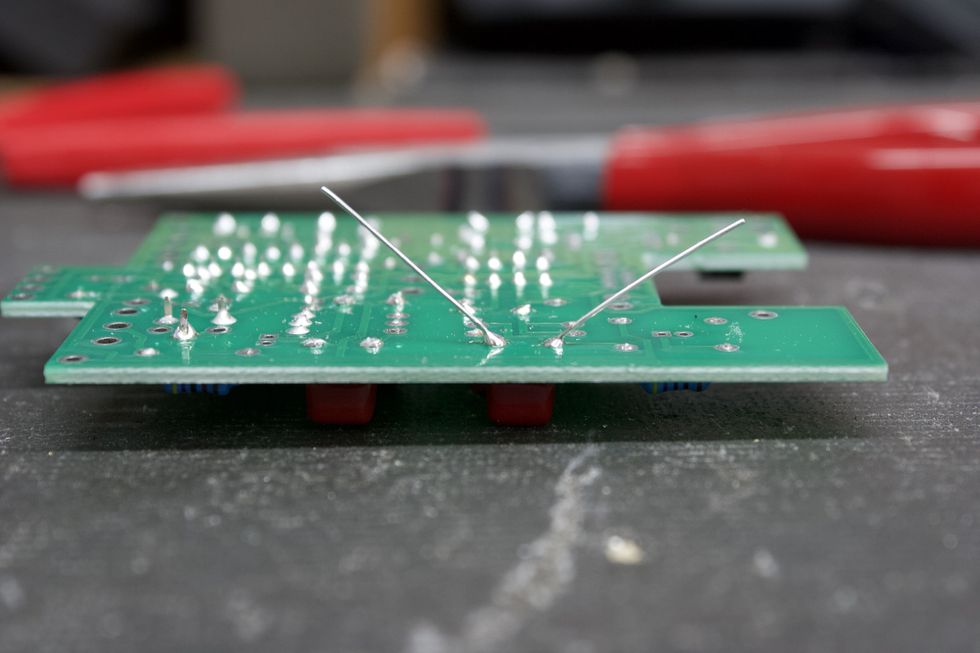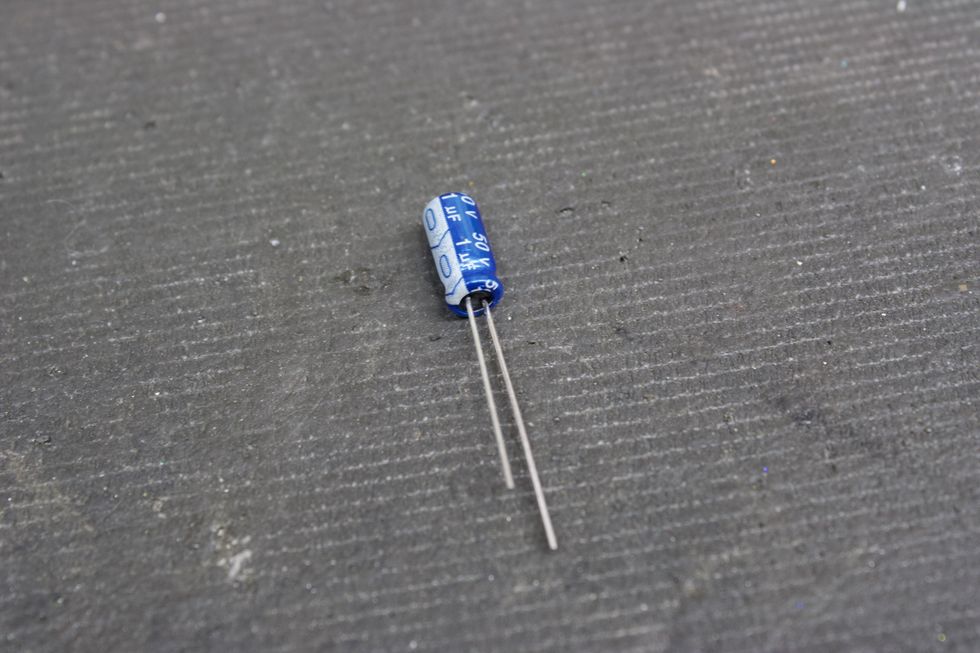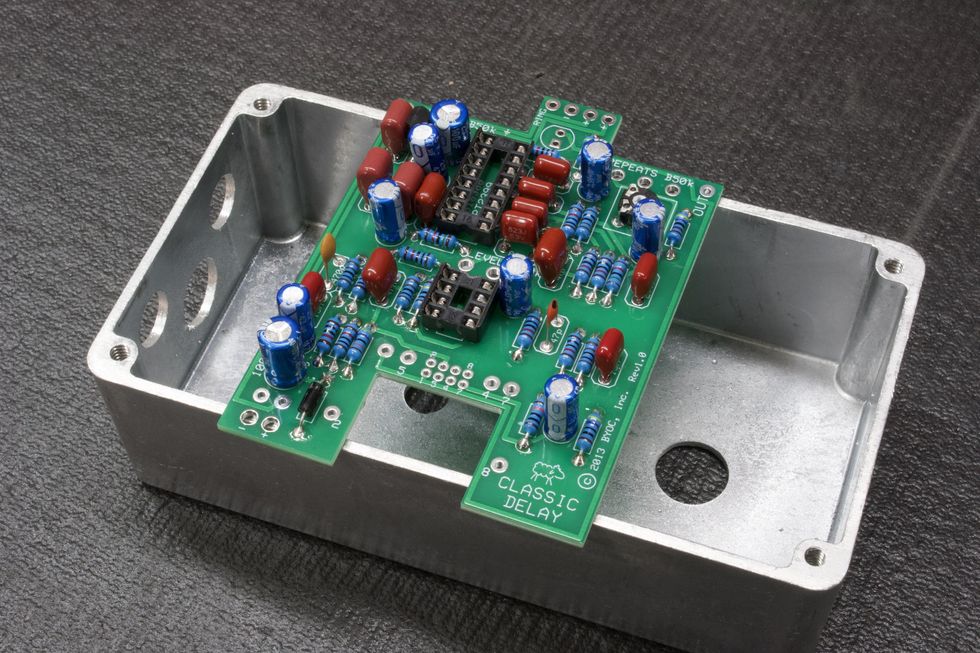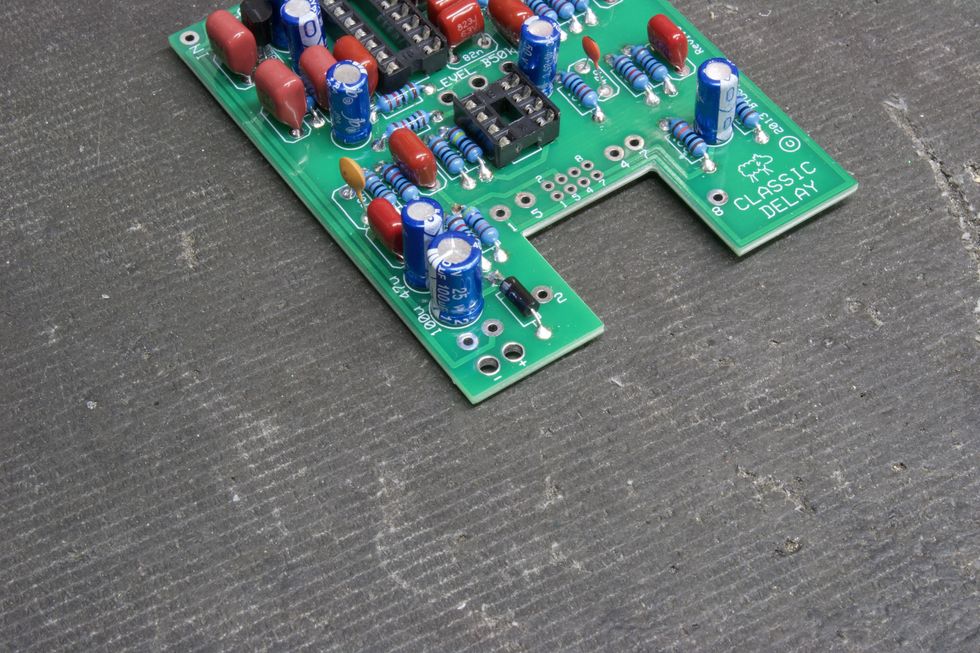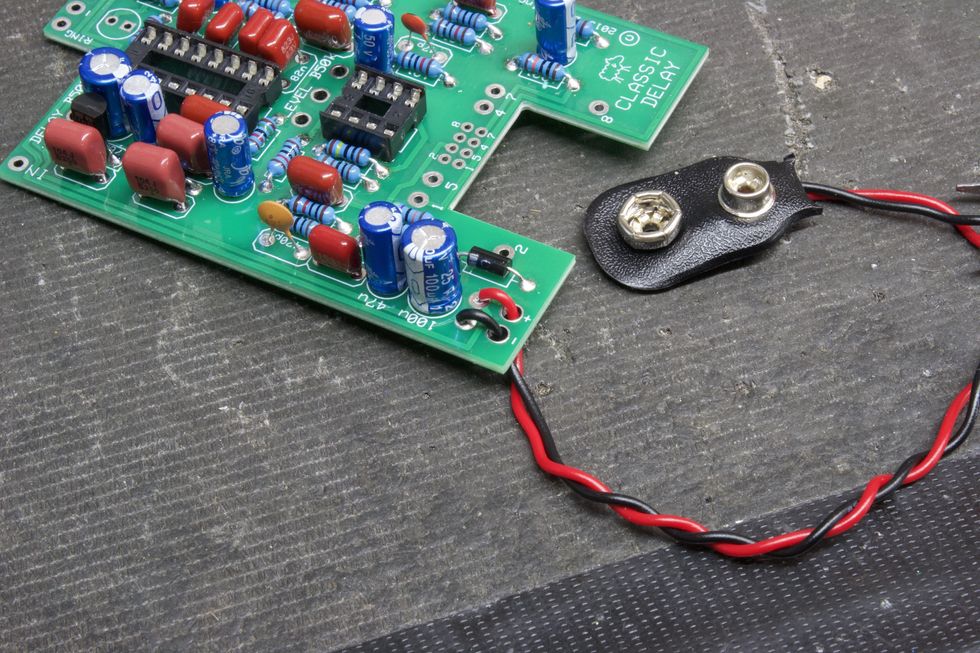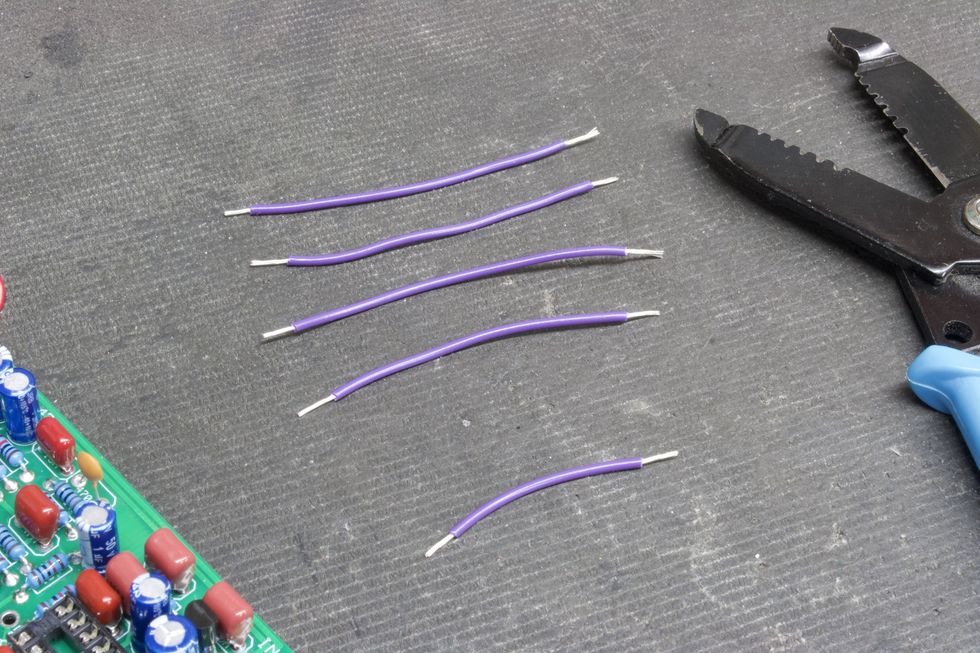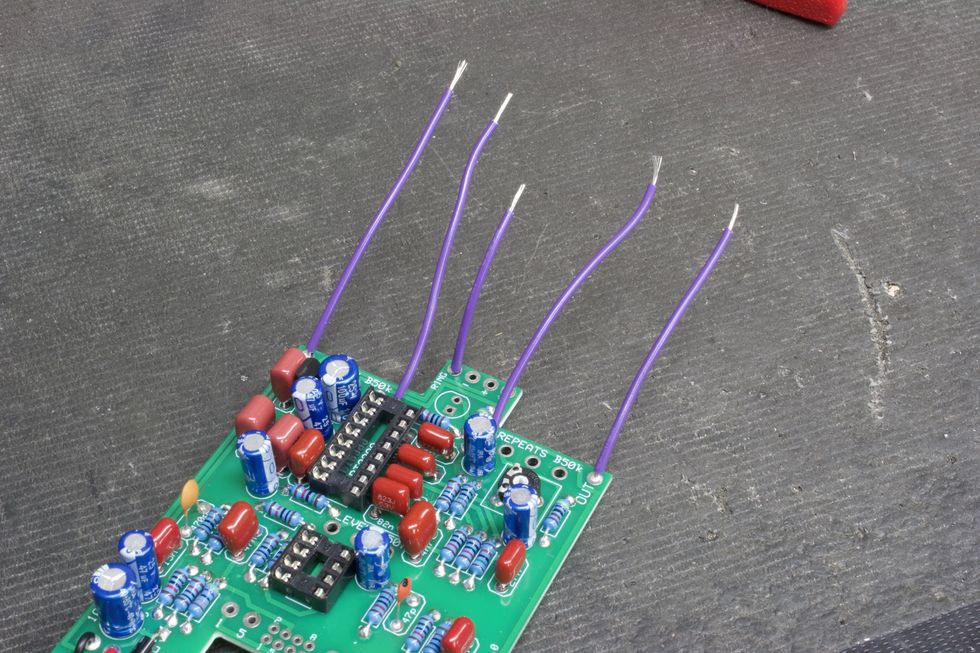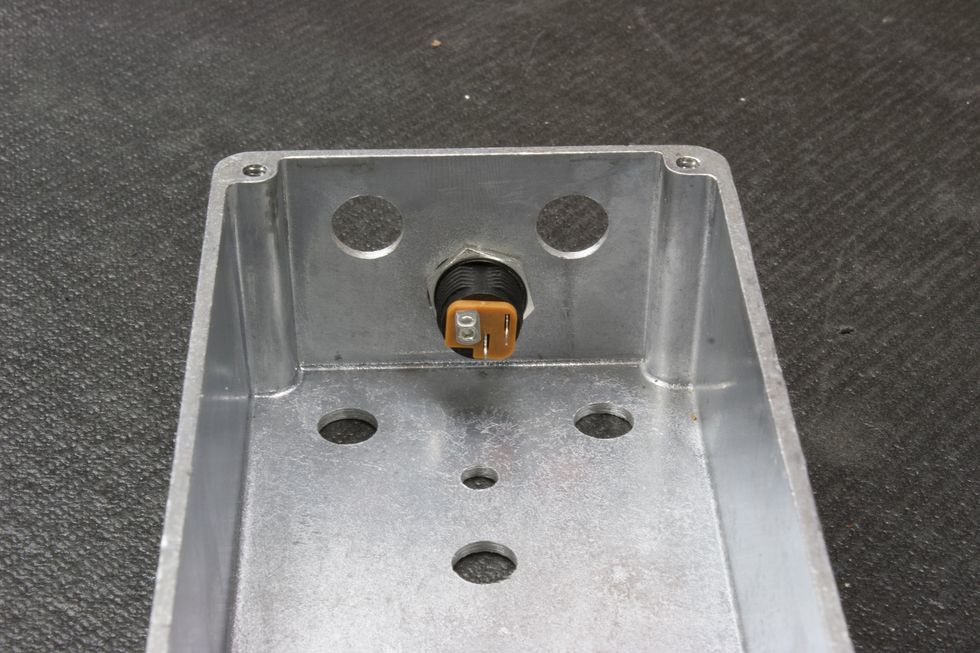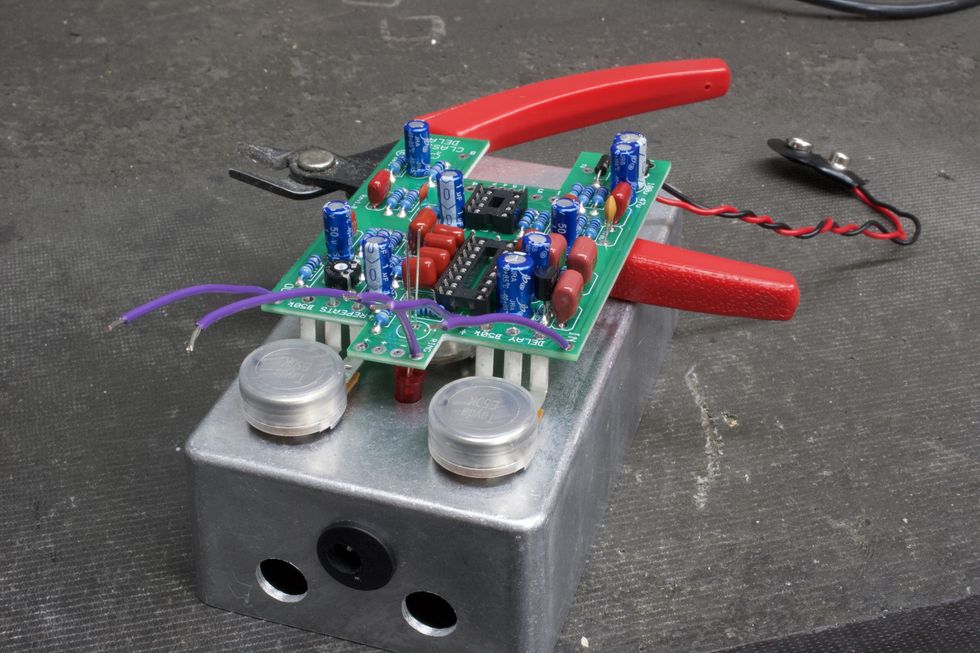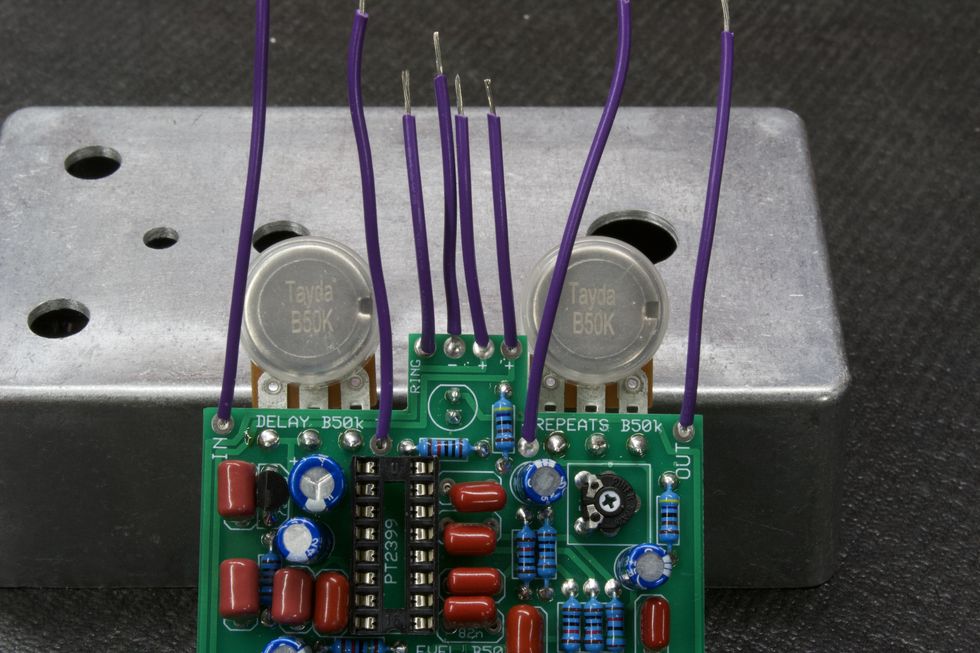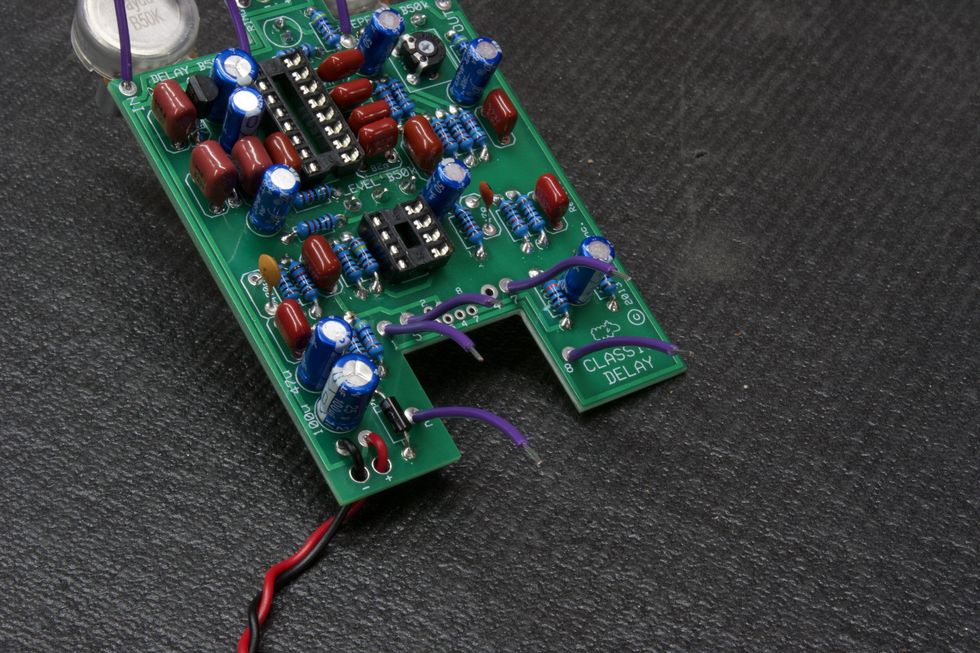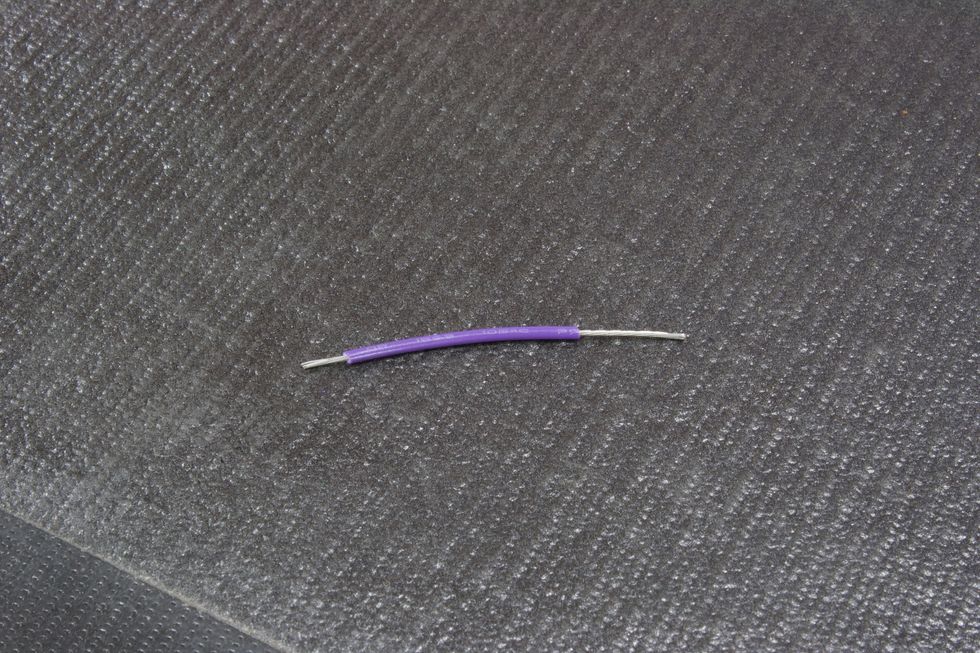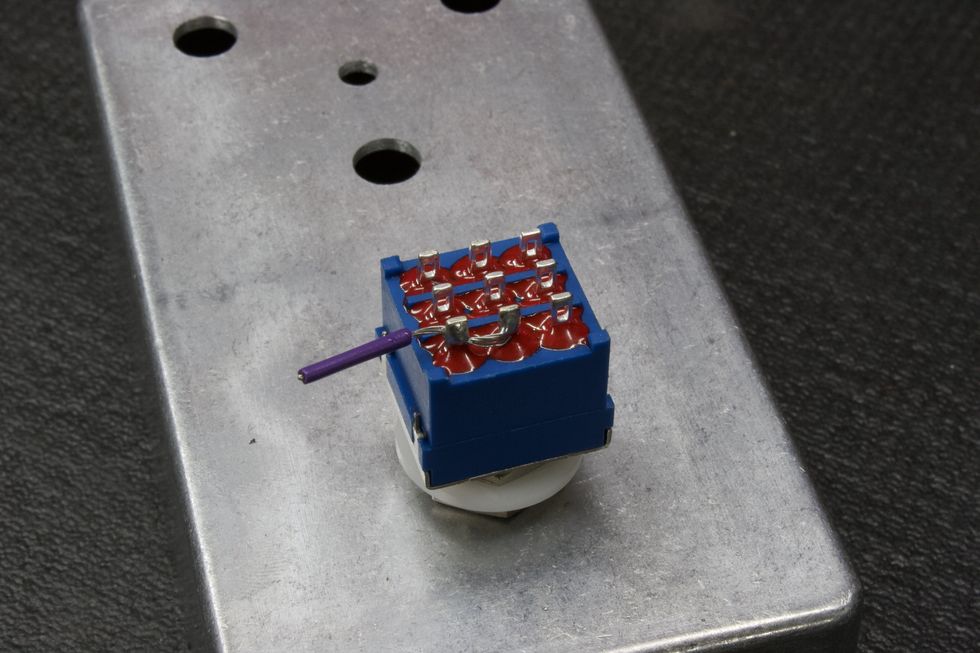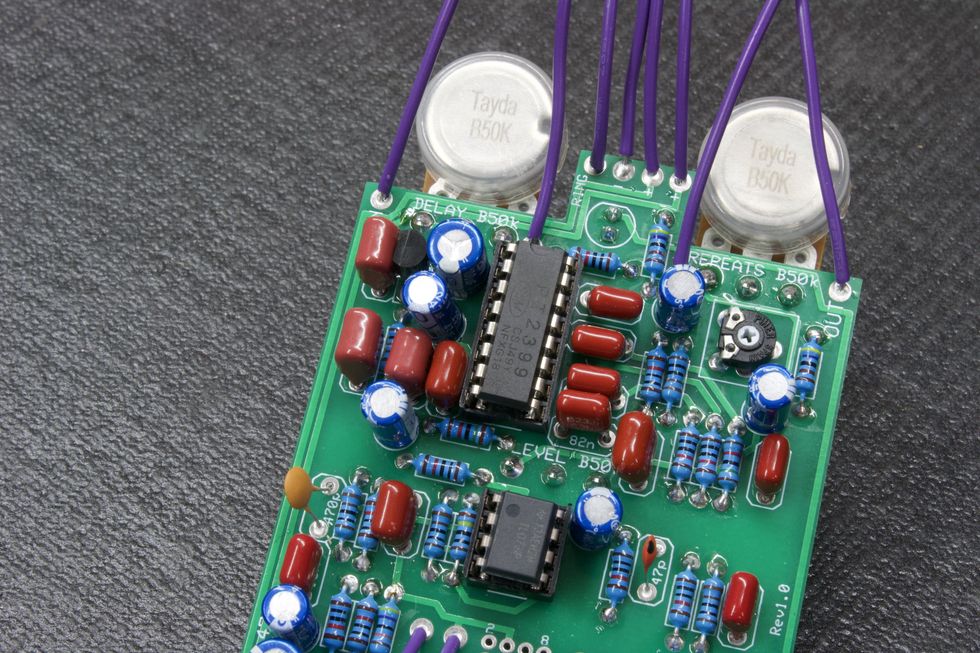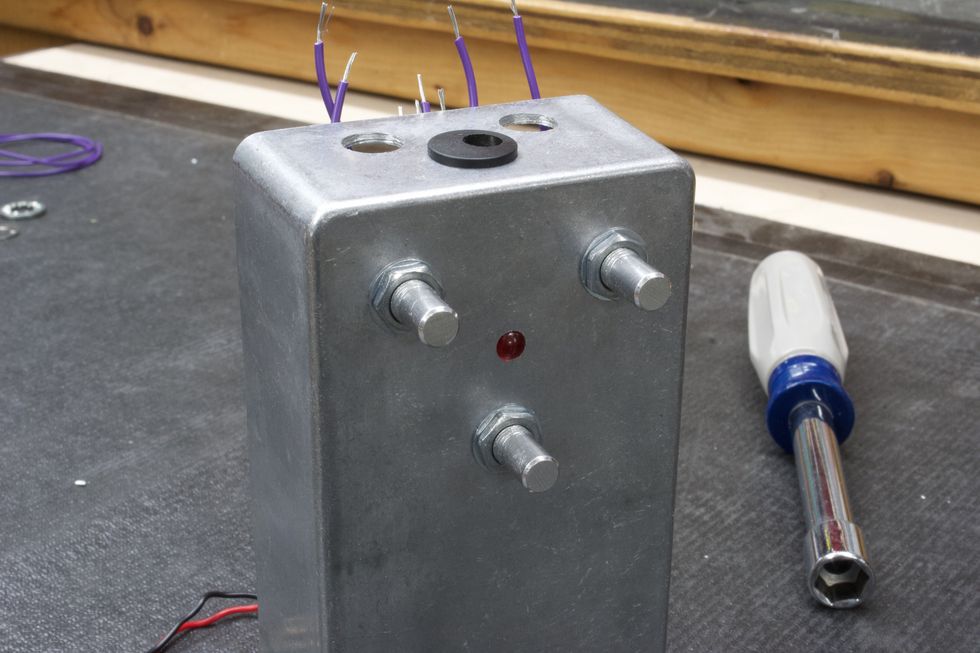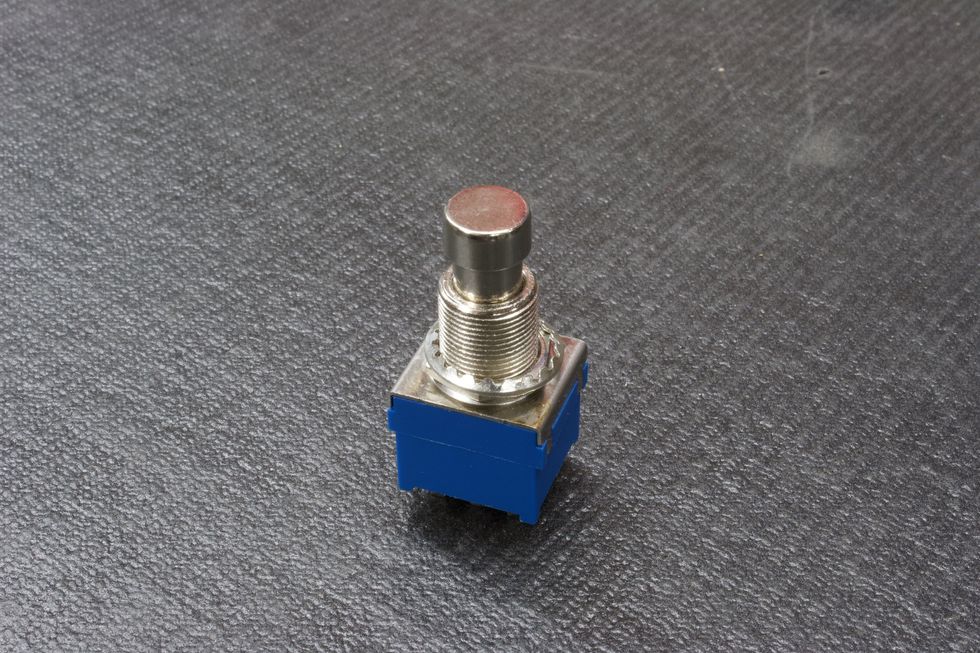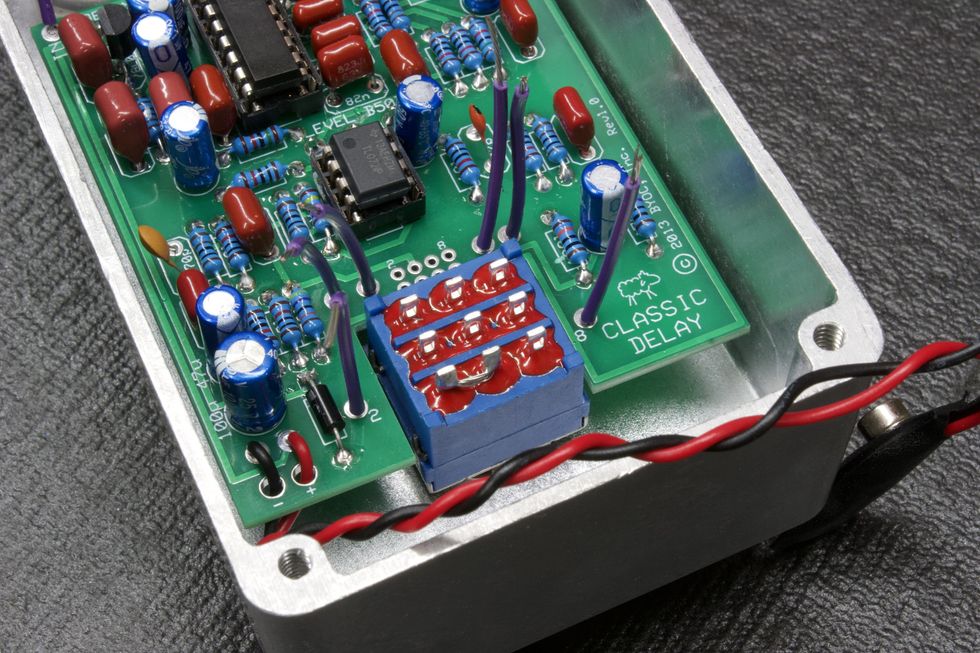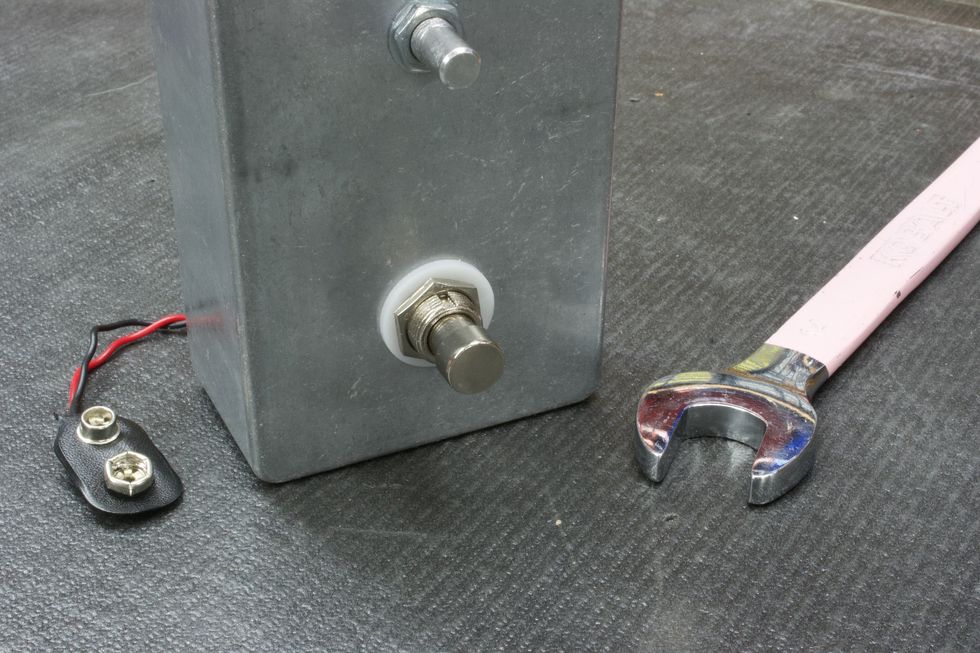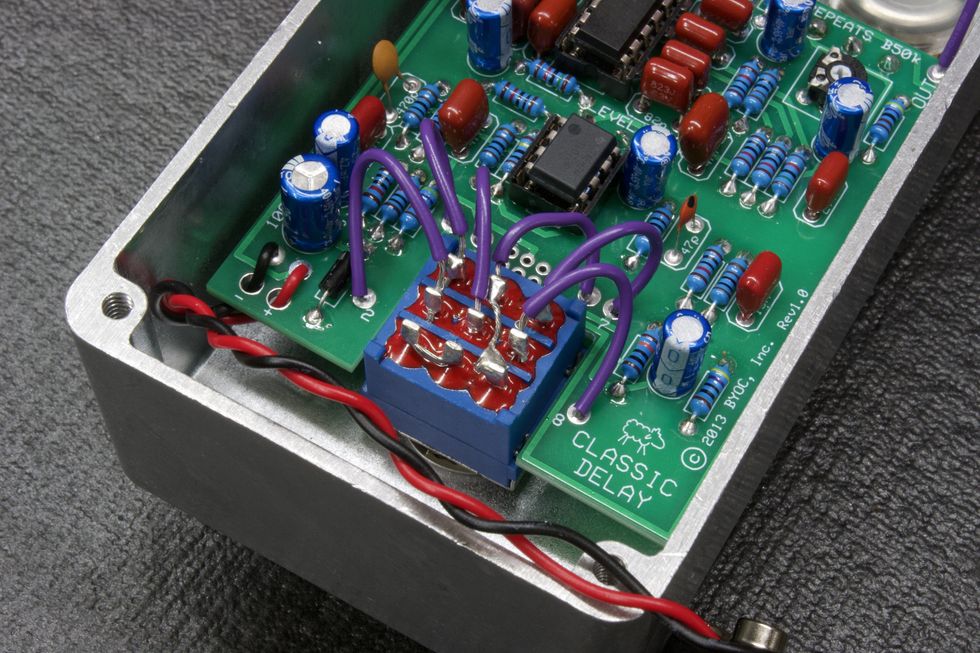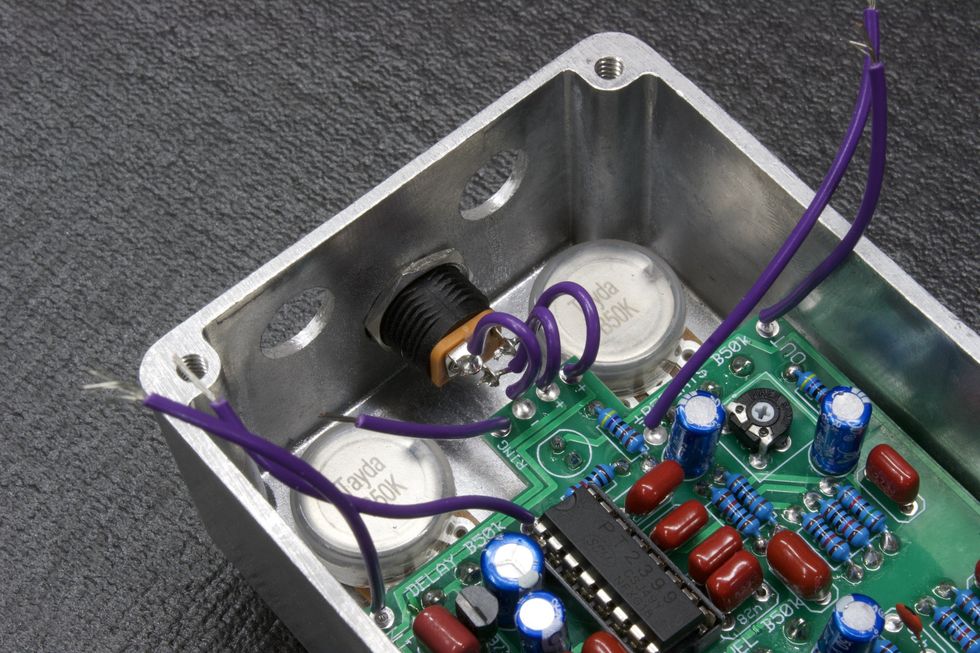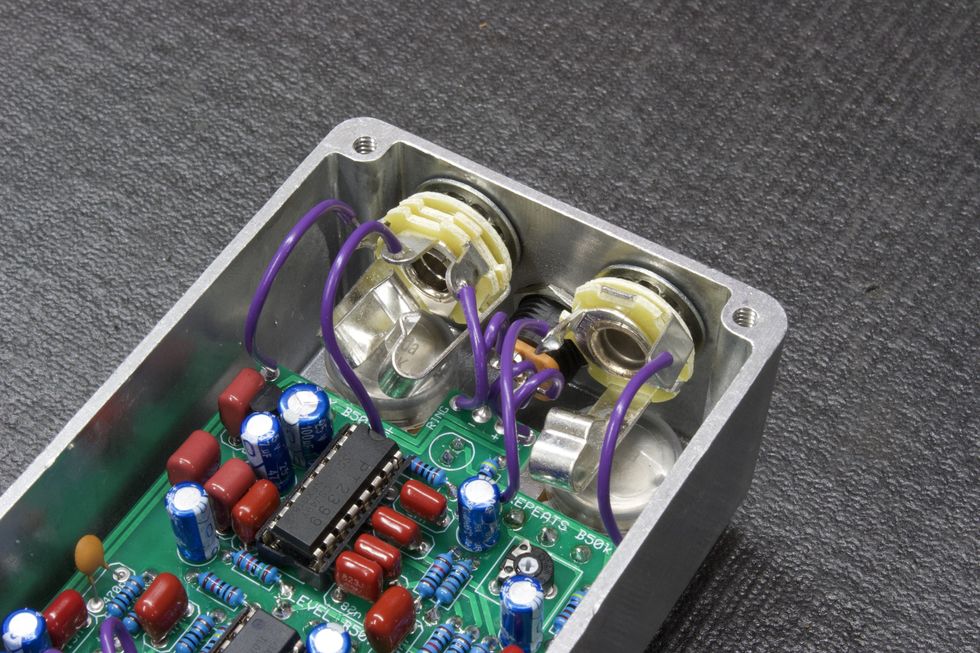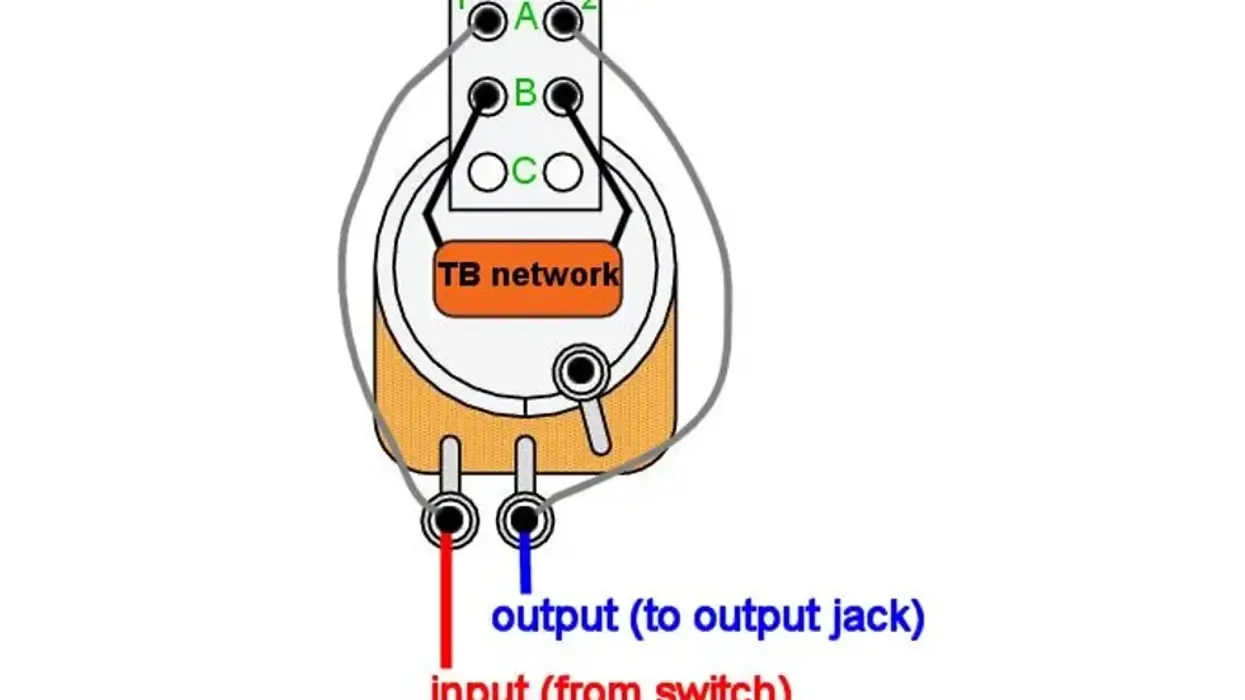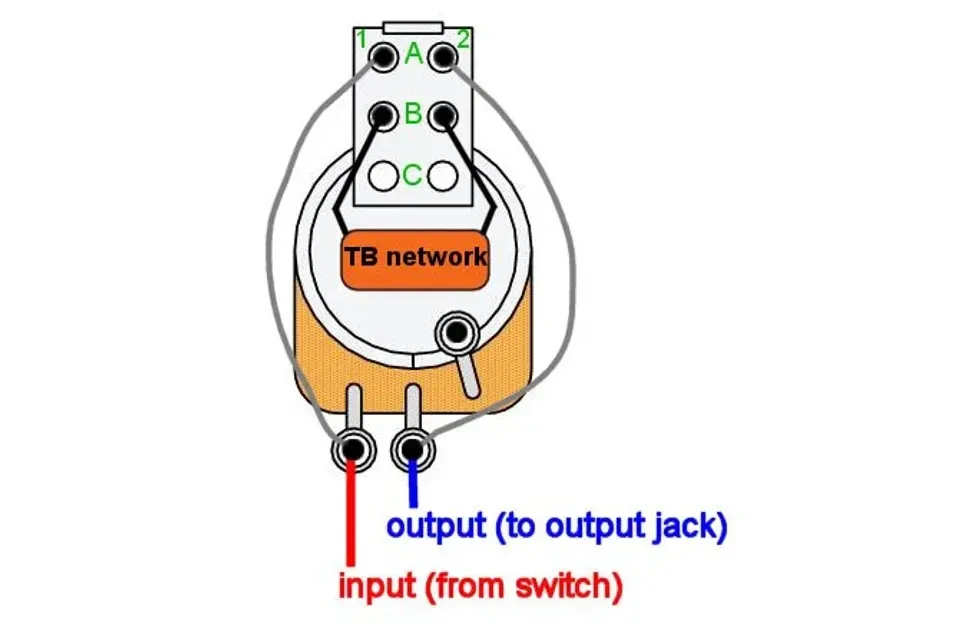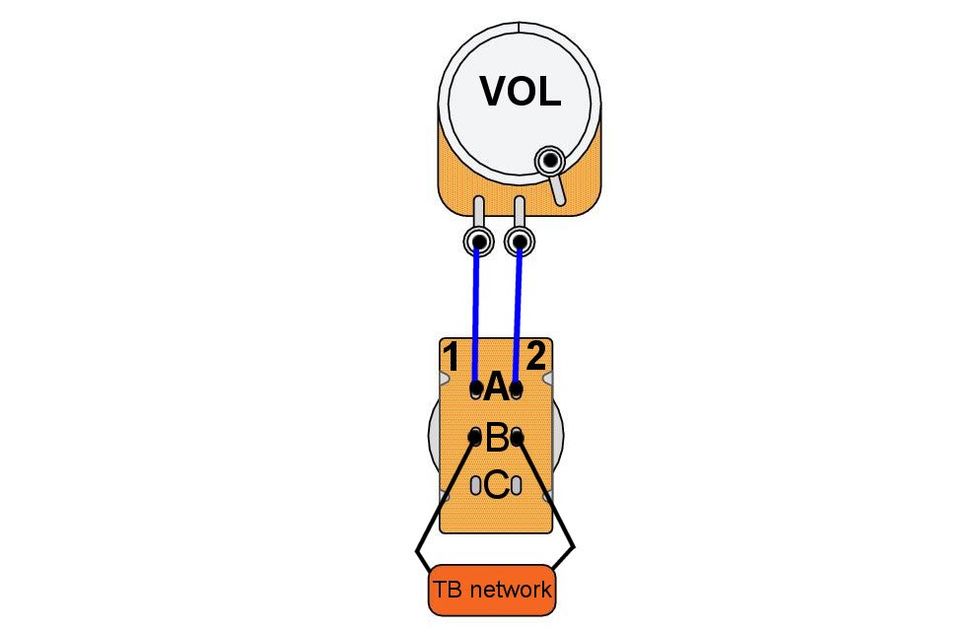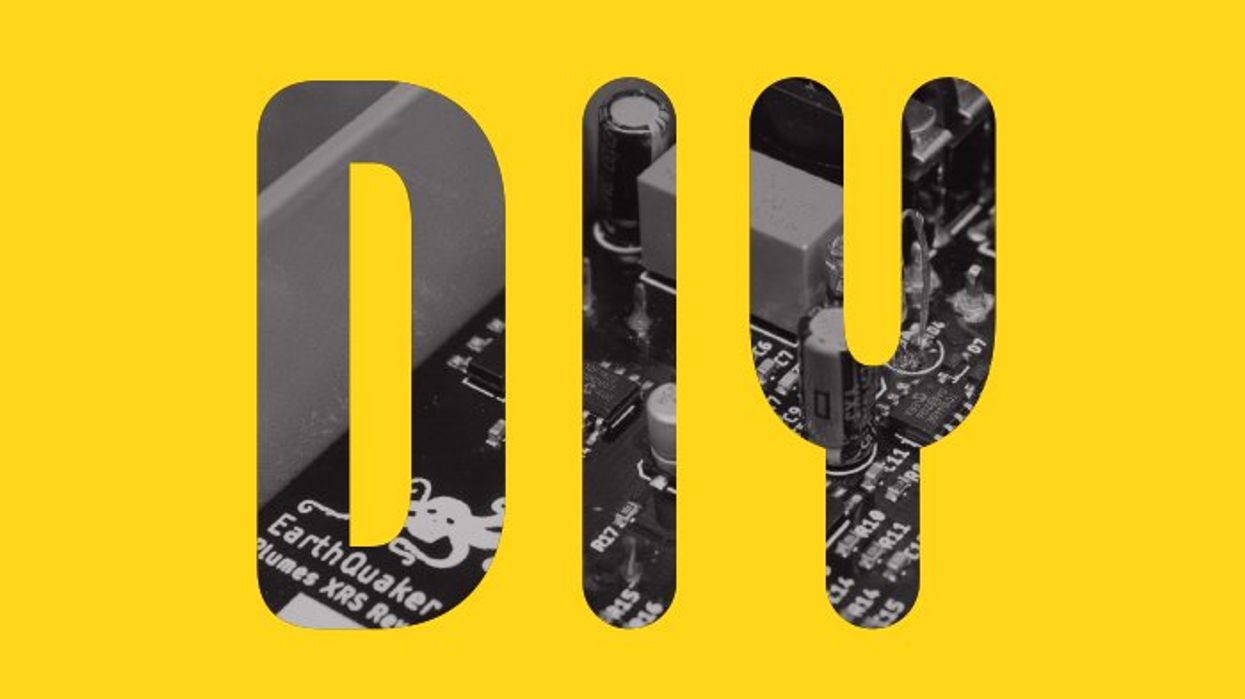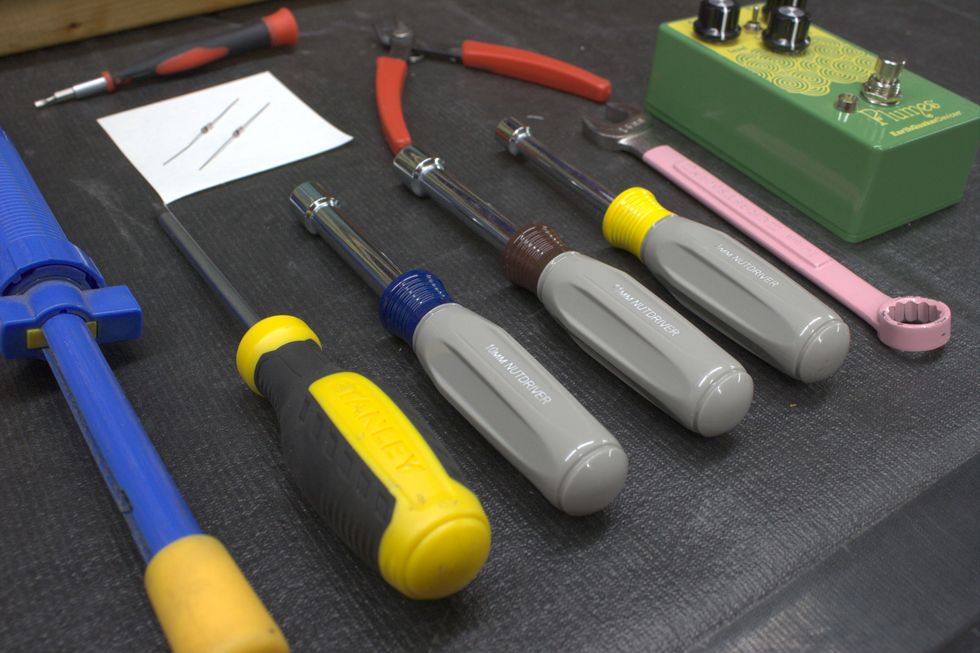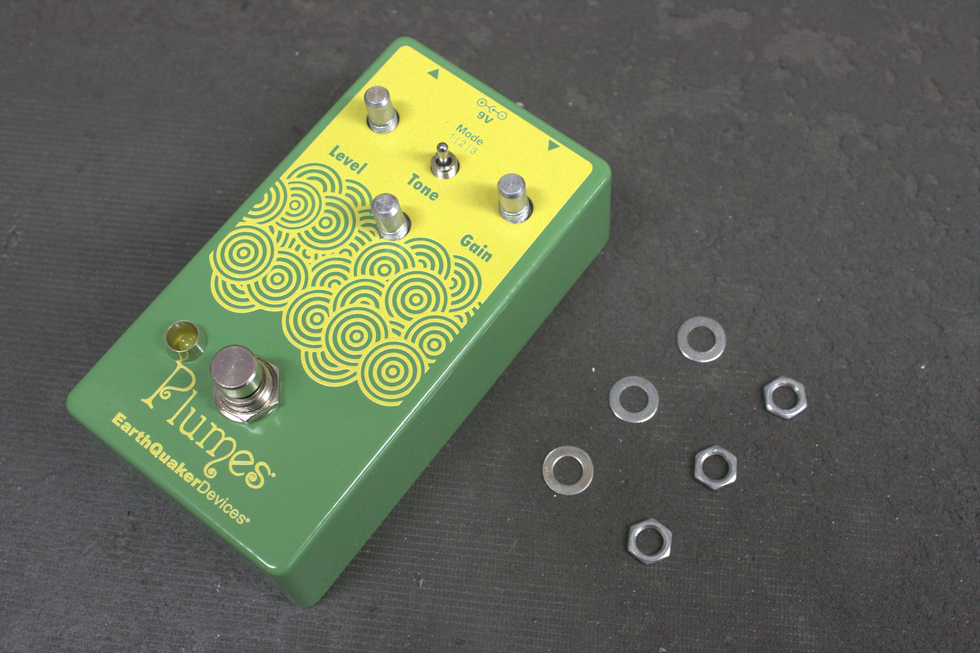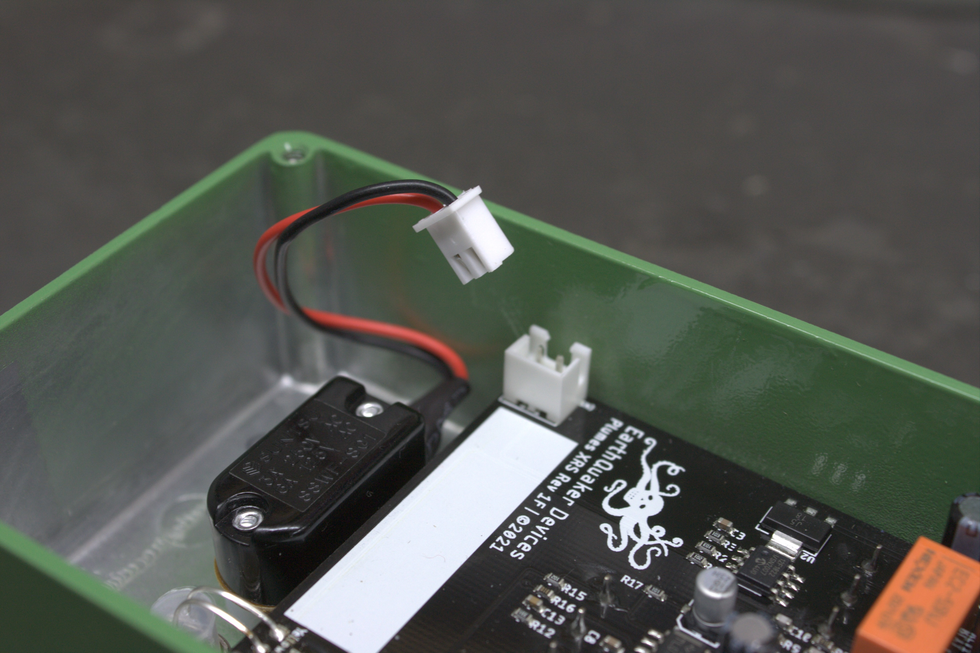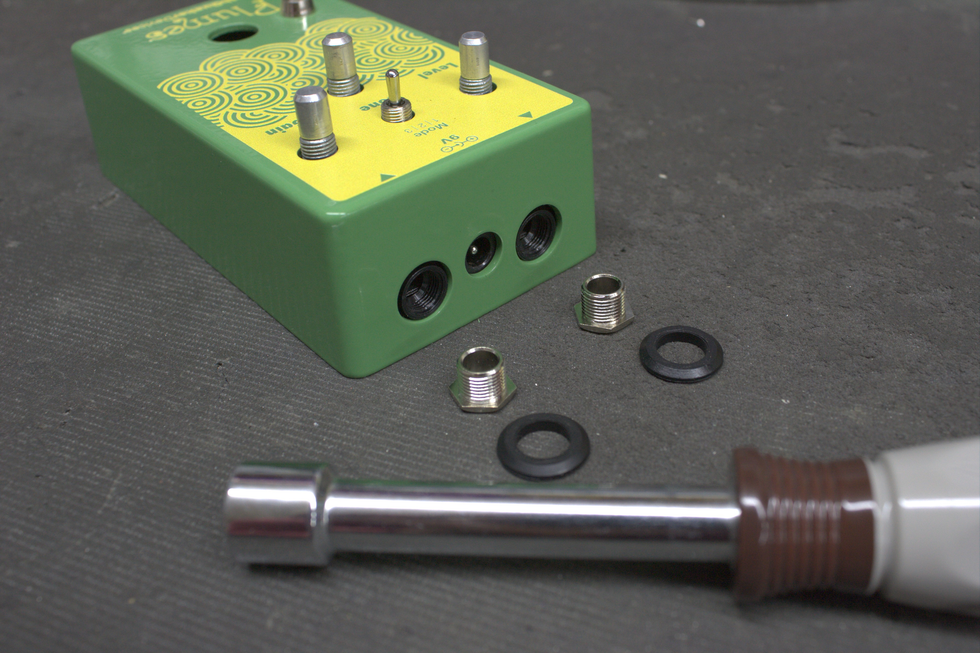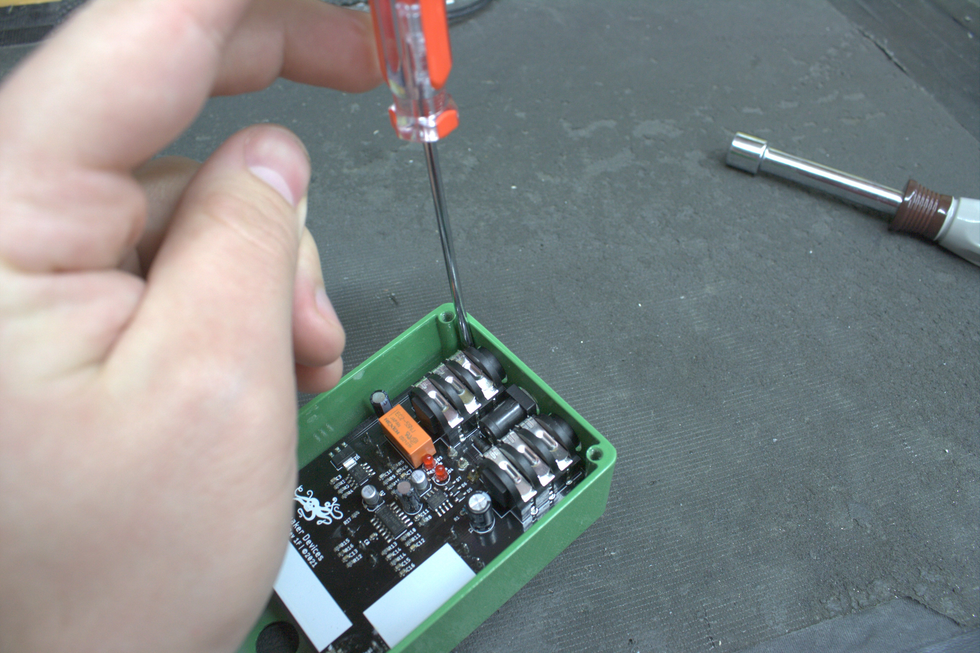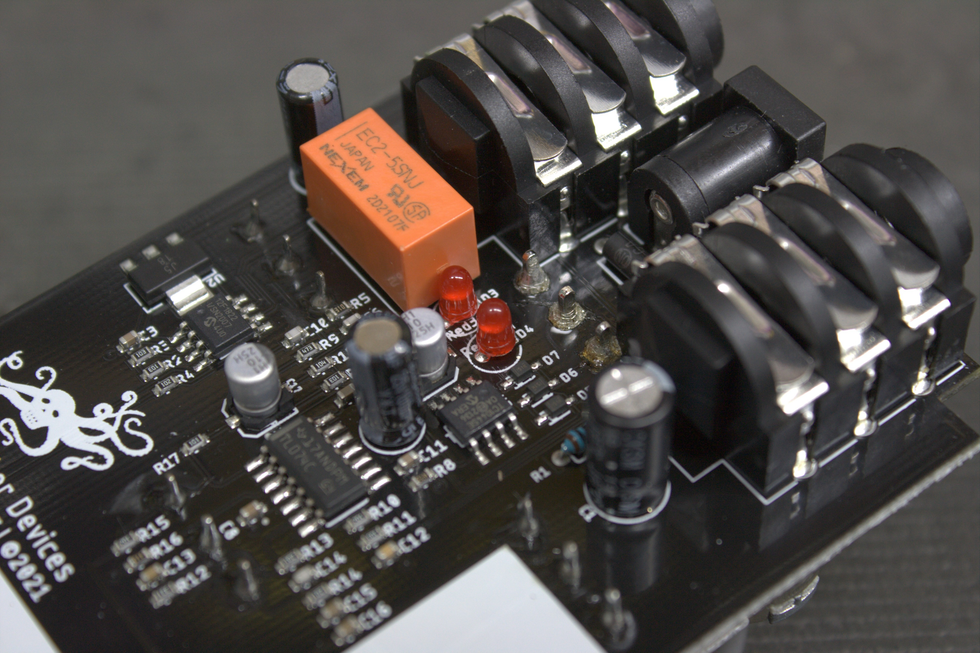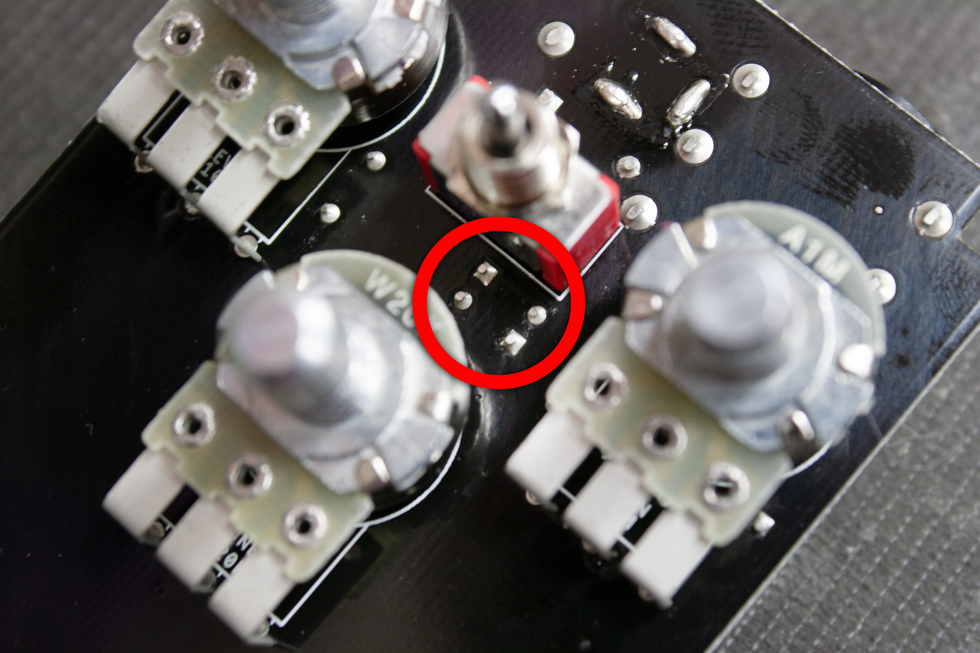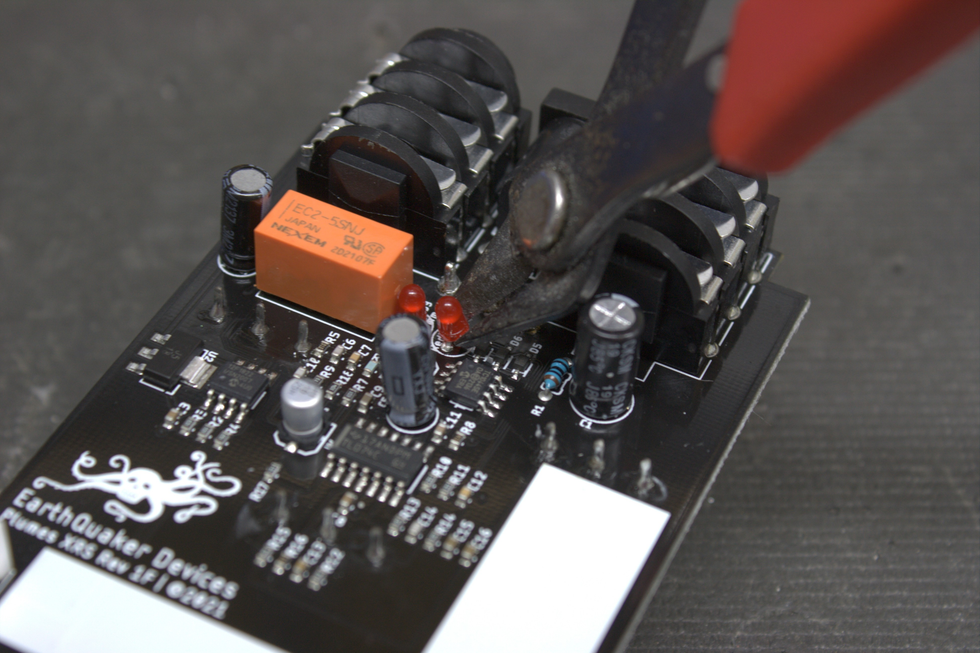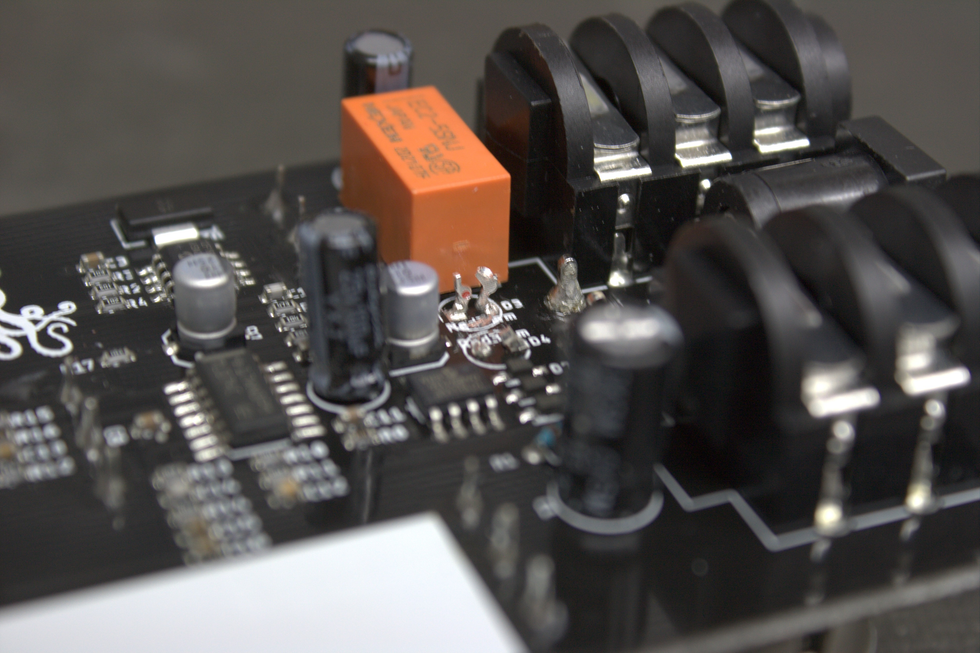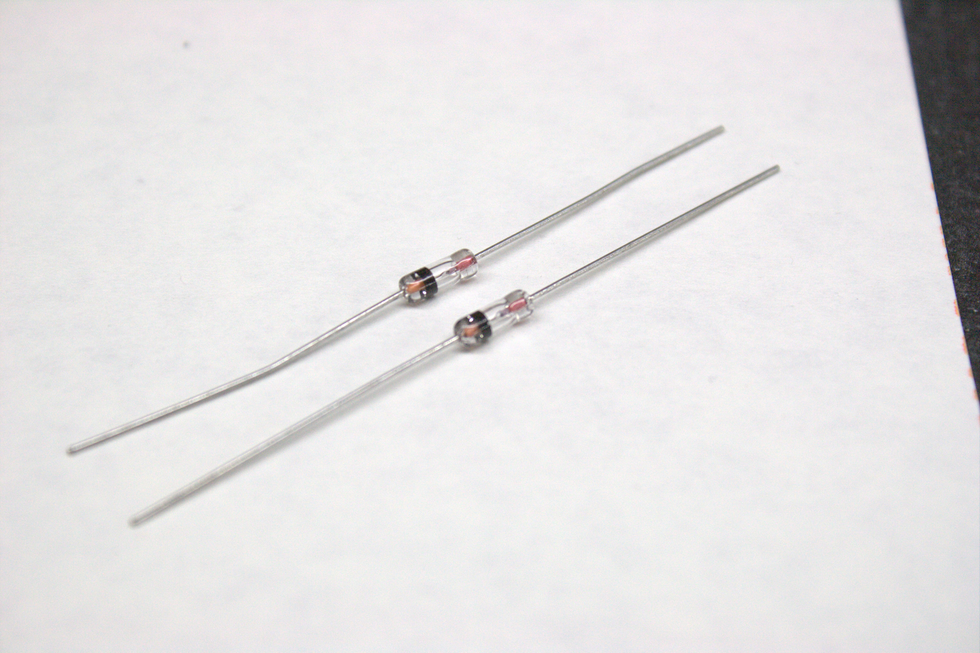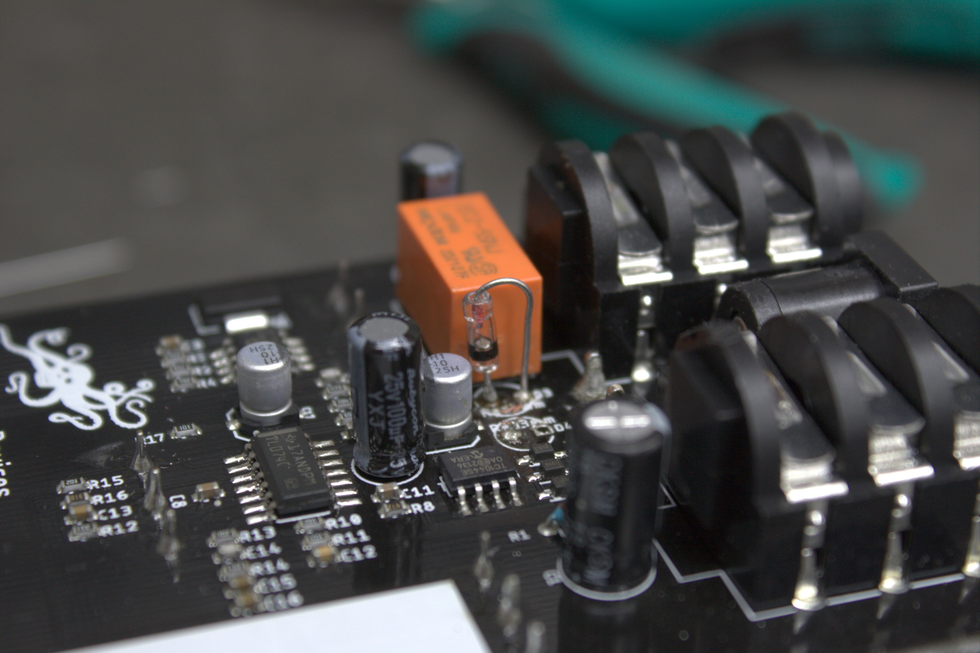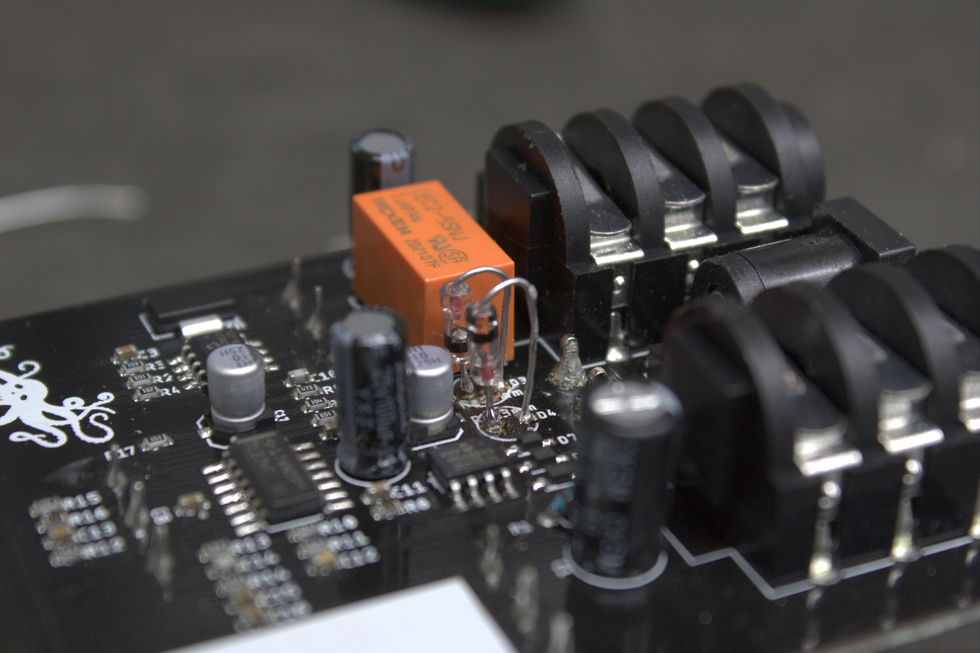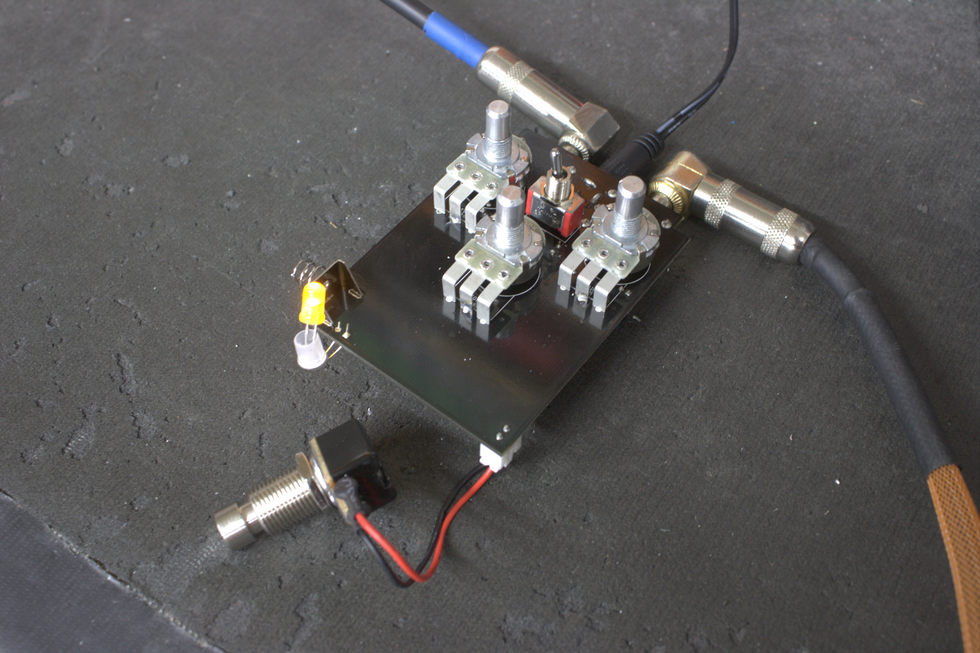Some questions are seasonal. We can go for months without fielding a single query about different bypass schemes or the impact of paint color on tone, and then, for a solid week, every phone call and email is: “I like this pedal, but how much better could it be in black with true bypass?”
Questions about stereo summing have a similar seasonality. Summing mixes the two output channels of the last effect in your chain into a mono output to feed a single amp, and recently many guitar players have asked if their stereo pedalboards could benefit from sum-to-mono functionality. Stereo has come in and out of vogue over the years, but there has been a resurgence—with increased releases of stereo effects and increased interest in ambient sounds and textures.
There are many options for running several stereo-in/stereo-out pedals together to create unending tapestries of sound that cannot possibly be contained in a single channel and, therefore, must exit your board via two outputs, in stereo. But once I set up my rig for stereo, what happens if I can’t bring that second amp to the session or gig? Is half my sound (and a corresponding amount of my self-worth) lost for good? Can both be recovered by mixing the right and left outputs of my board together and feeding them to a lone amplifier?
The short, if not satisfying, answer is “it depends.”
Some specific scenarios drive the desire to sum. A common one is the use of ping-pong delay, where two panned delays create a stereo image that seemingly bounces between left and right channels. If you were to monitor just one channel, half of those repeats would be missing. In this case, you’re not only losing the stereo spread, but your rhythmic riffs won’t translate because the sound’s signature has been drastically altered.
So, mix the left and right channels, bring the pings and pongs together, and restore your sound, right? Well, sorta. If we look at the content of each channel of our stereo ping-pong delay, we can imagine some potential issues. With a typical delay, what you hear at the amplifier is a mix of the repeats and your dry signal. In the case of a stereo ping-pong setting, the left channel is dry plus the pings, and the right is dry plus the pongs.
Clearly, if you add the channels together, you’ll get both the pings and the pongs. However, what may be less obvious is that you’re also summing the dry signal from each channel, effectively doubling the amount of dry riding on your new, mono output. This may not be a deal breaker, though. You went from having two amps in stereo, each with dry in them, to one amp with twice the amount of dry. The math seems to square, but at the gig, how you run your amplifier will alter the equation. If you like your amp anywhere near the brink of break up, hitting it with double the dry signal isn’t going to double the output at the speaker cone. What you will get is more compression and saturation. Additionally, it’ll sound like your relative mix of dry-to-repeats has changed. Now, all other things being equal, your sound is mono, but it’s also breaking up more and wetter than you had intended.
For some reverb and modulation effects, the designers have worked out a specific phase relationship between the right and left channels to give the listener a particular sense of space in the stereo field. What happens when you combine those two channels is a crap shoot. Could be a positive or negative change, but it will almost certainly be different than listening to two separate amps.
Most guitarists consider summing to mono to avoid losing aspects of their sounds or having to rework all their sounds. Many times, when summing, your sounds will need adjusting anyway to deal with the double-dry signal effect or any unexpected results of summing channels that your pedal’s designer had intended to be separate.
Try monitoring just one side of your stereo rig. Note the differences between that and your full stereo setup and see if a couple small changes (like the panning in your ping-pong delay) can close the gap. Additionally, there are devices that can help. You can use a small Radial Mix 2:1 or a Behringer MicroMIX, for example, to test summing your rig’s two channels to one.
Summing may be useful in certain circumstances if you can account for the potential pitfalls, so use your ears to decide if summing adds up to what you’re looking for.


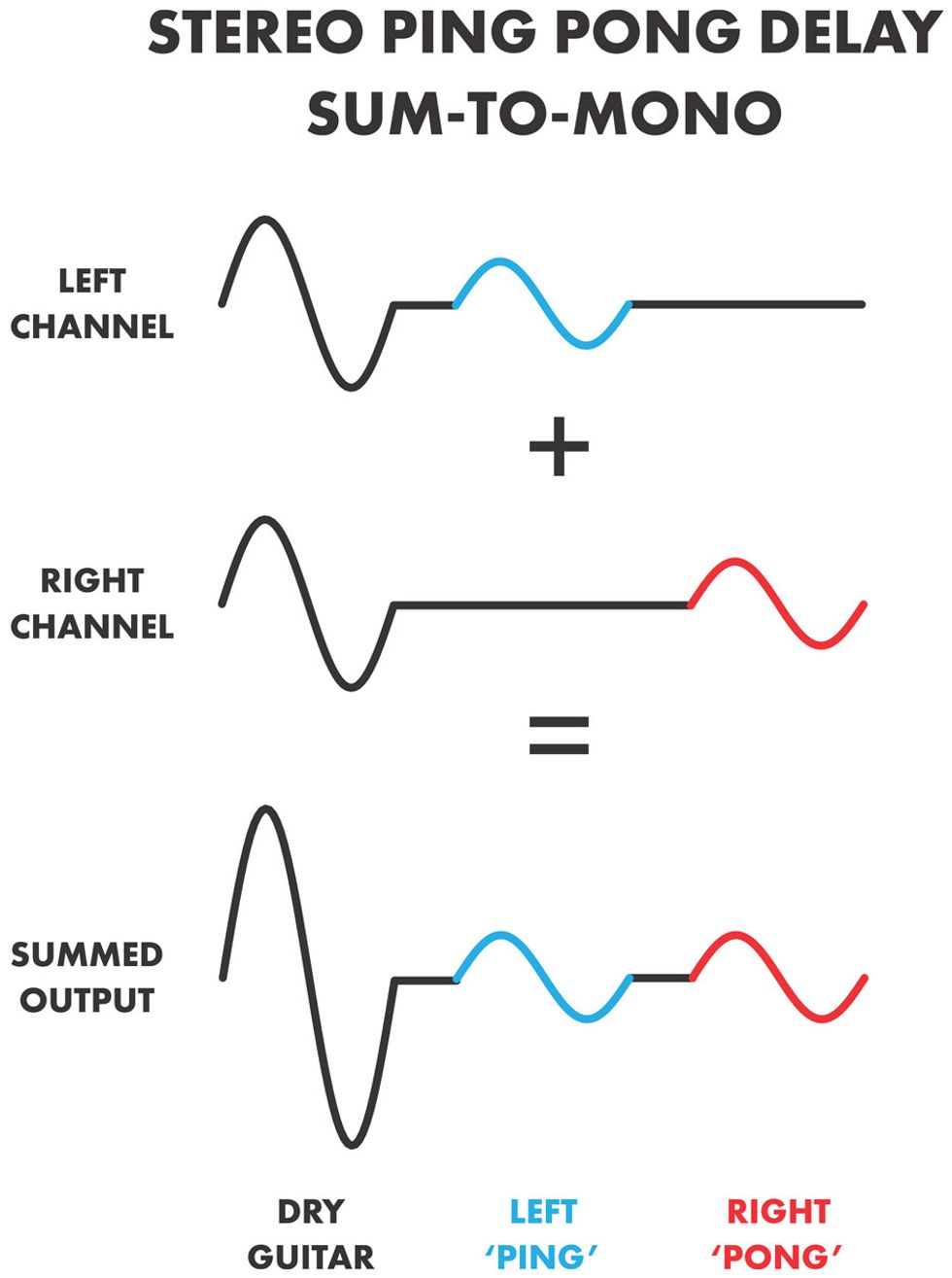







![Rig Rundown: Russian Circles’ Mike Sullivan [2025]](https://www.premierguitar.com/media-library/youtube.jpg?id=62303631&width=1245&height=700&quality=70&coordinates=0%2C0%2C0%2C0)


![Rig Rundown: AFI [2025]](https://www.premierguitar.com/media-library/youtube.jpg?id=62064741&width=1245&height=700&quality=70&coordinates=0%2C0%2C0%2C0)

